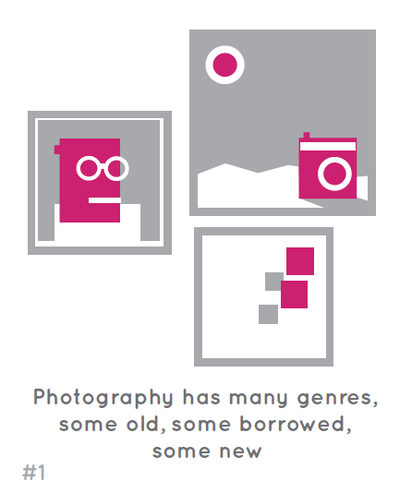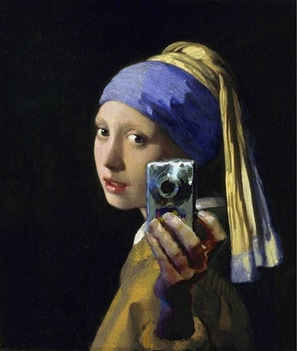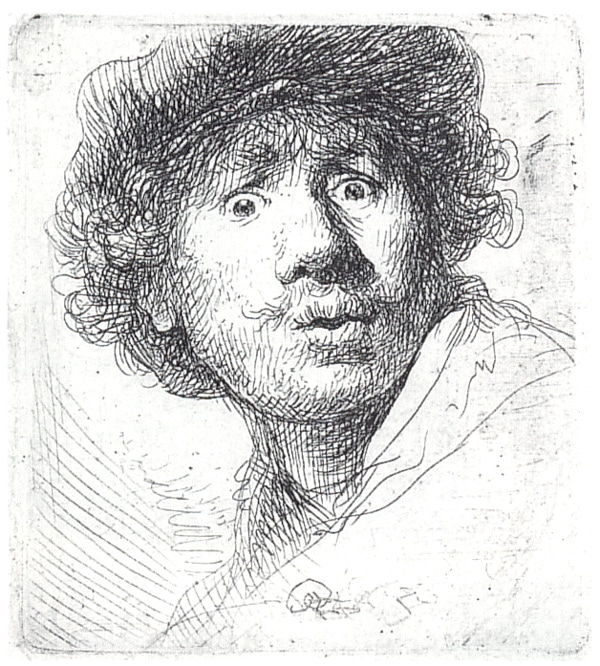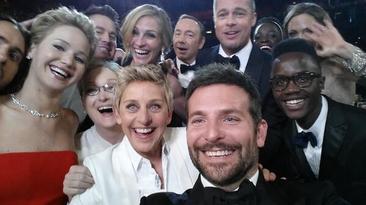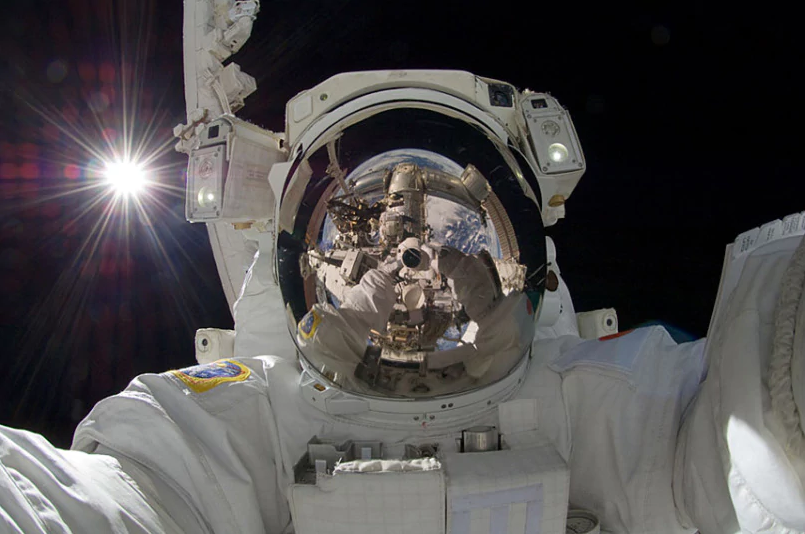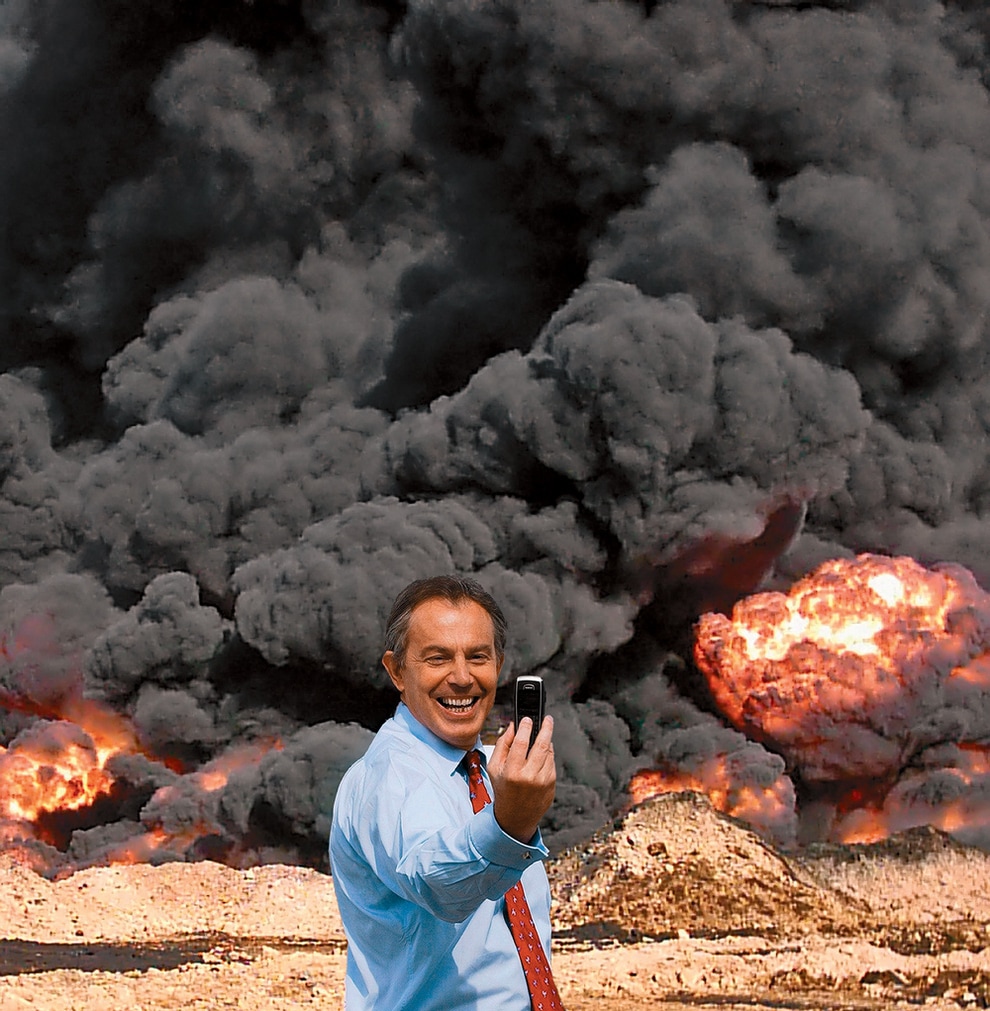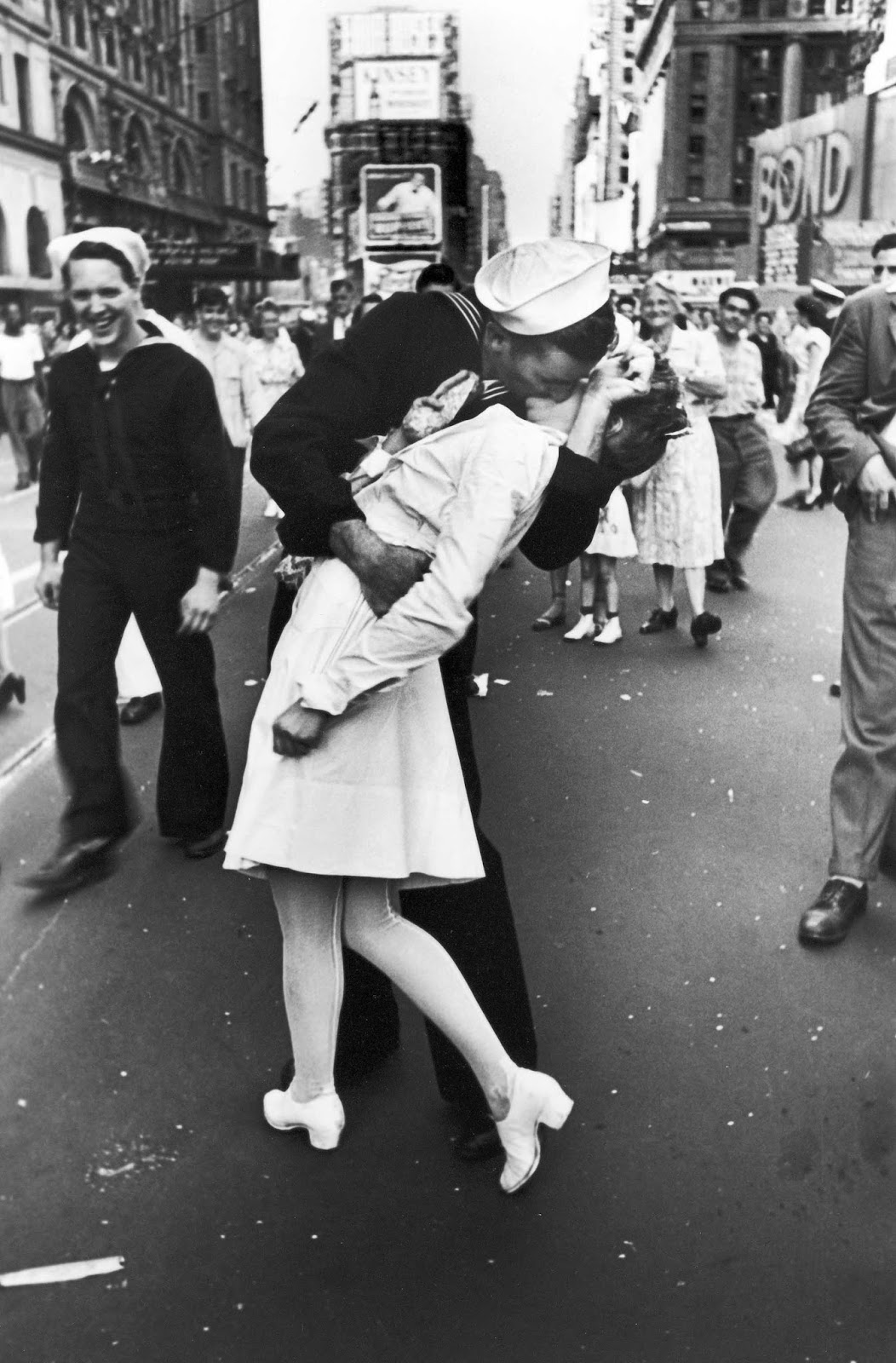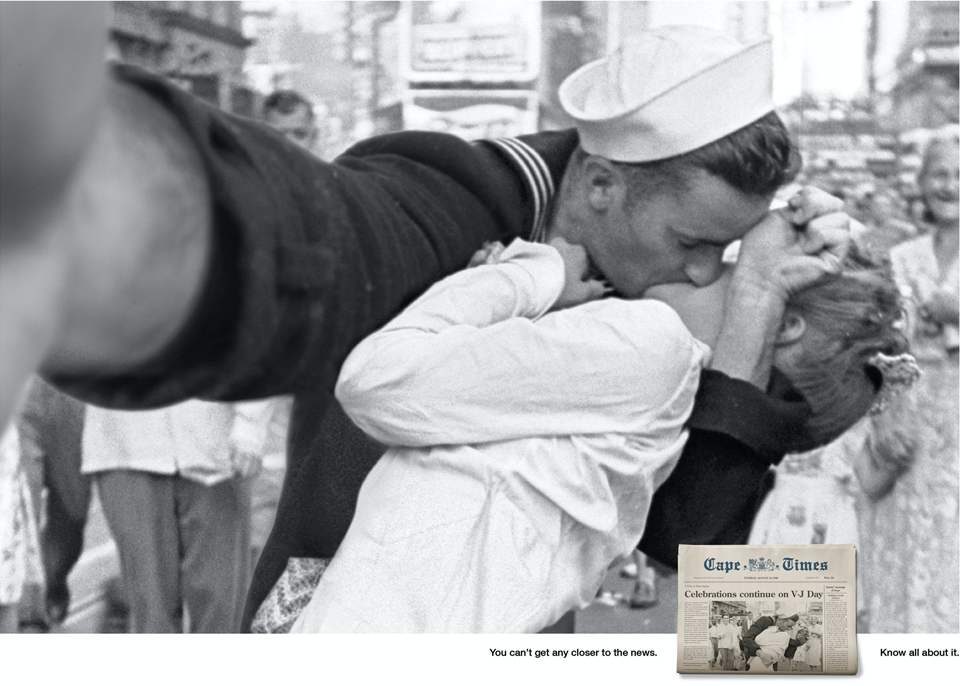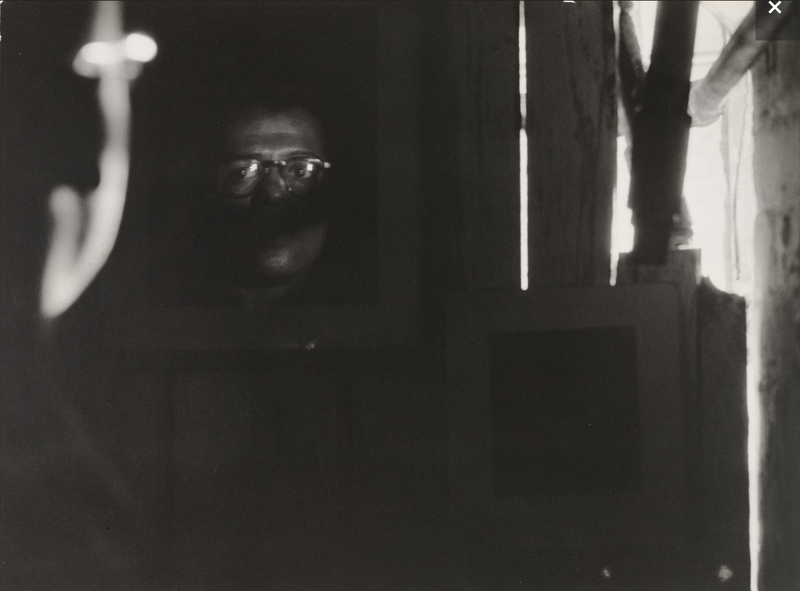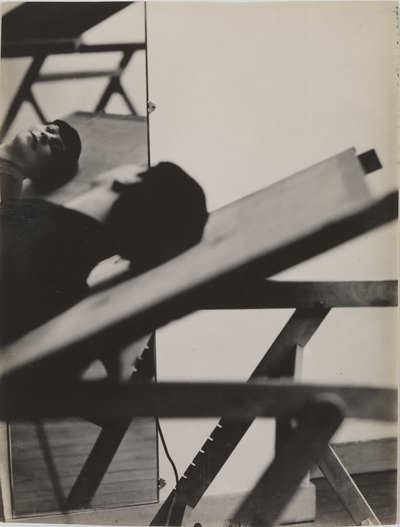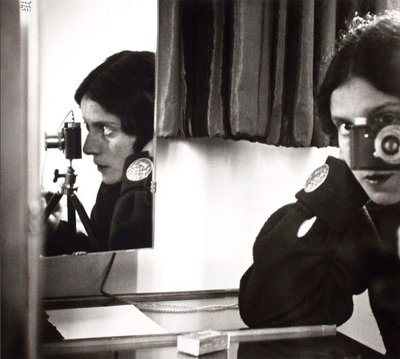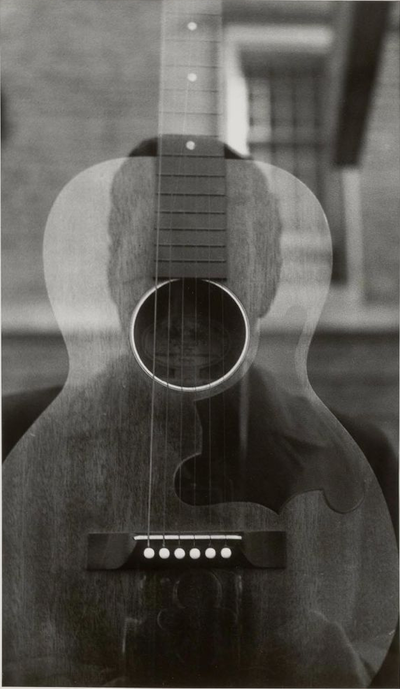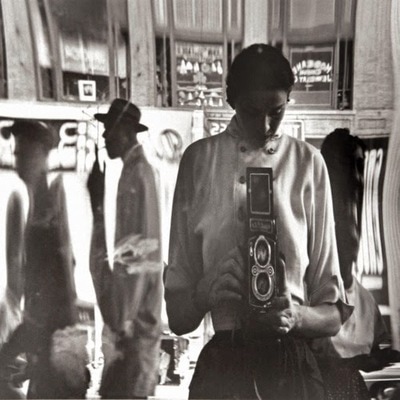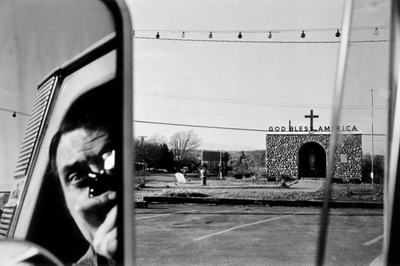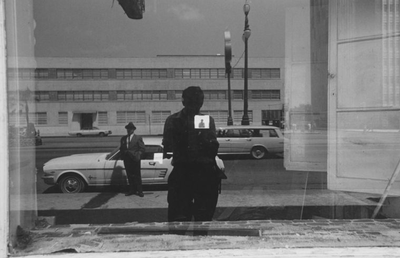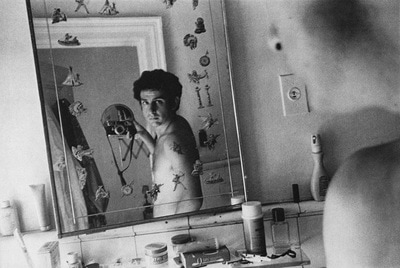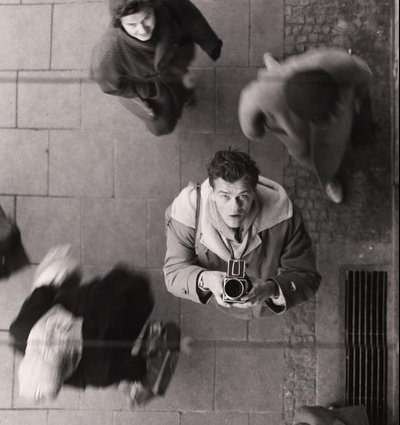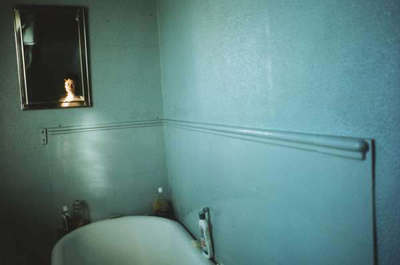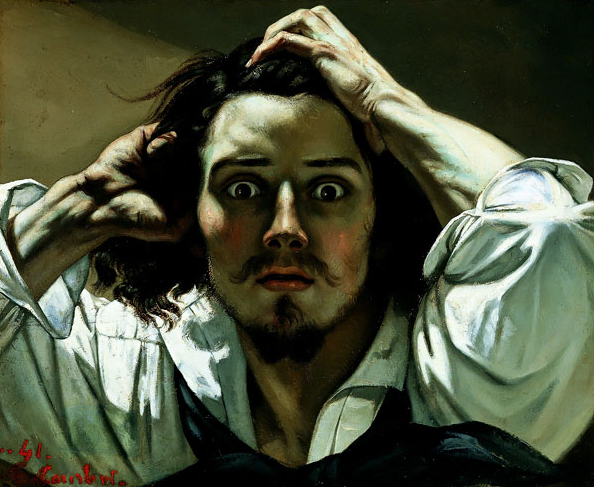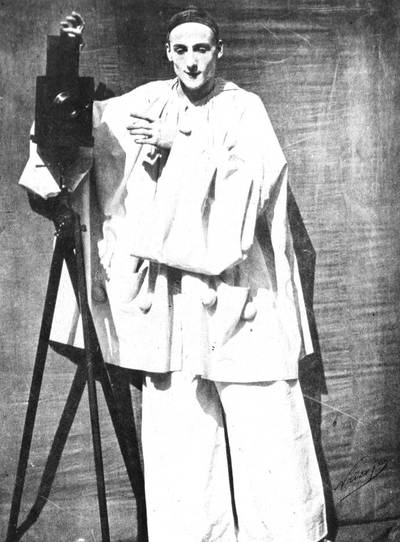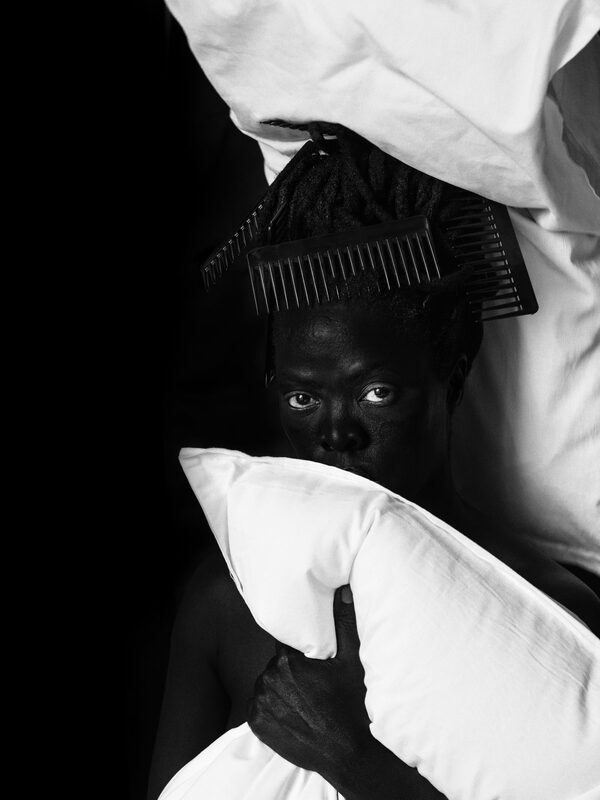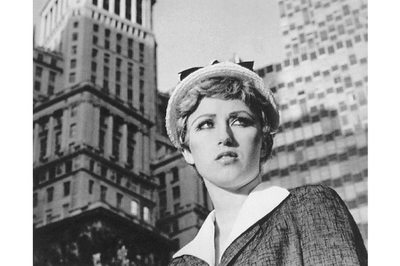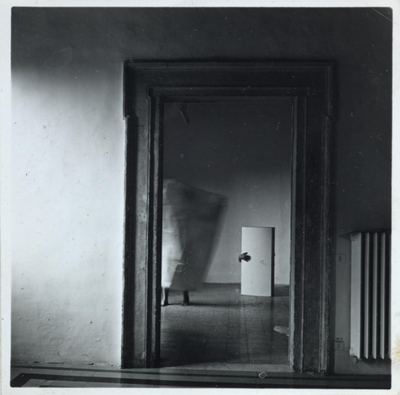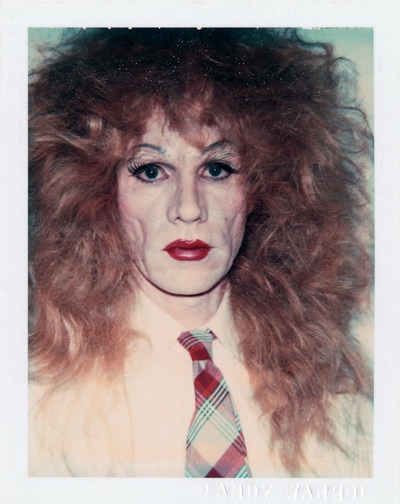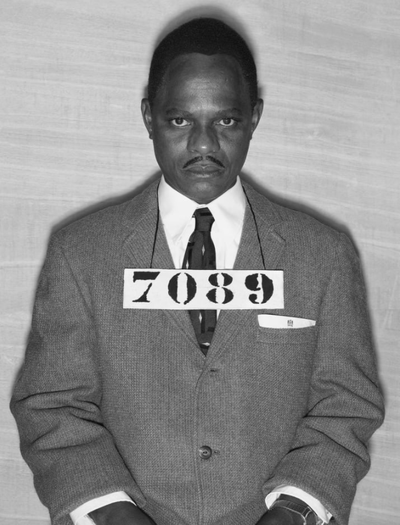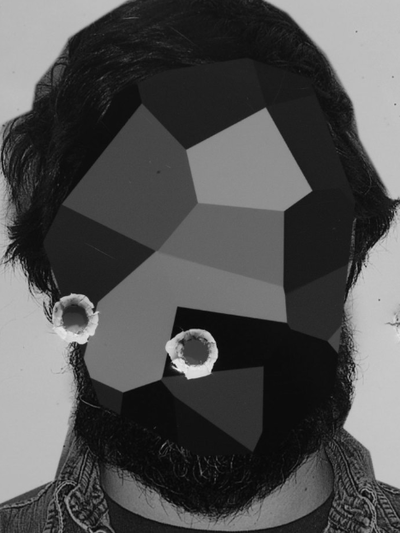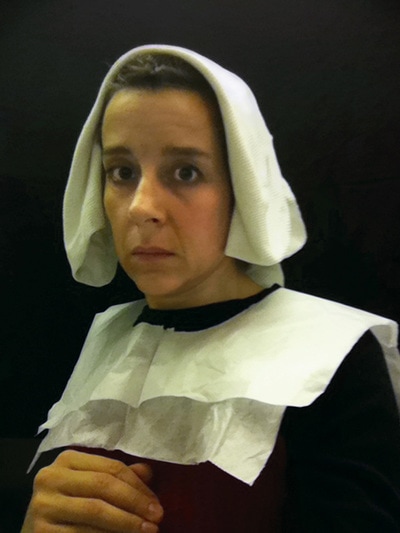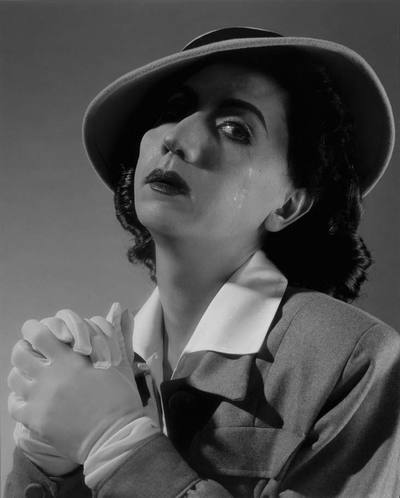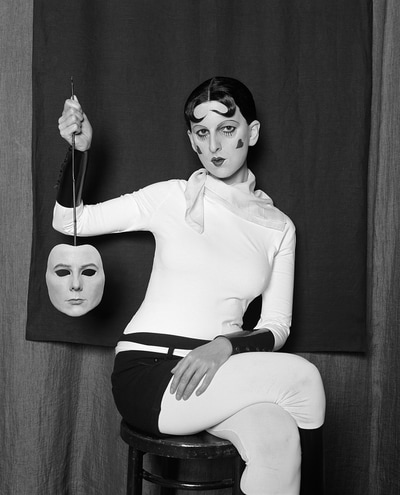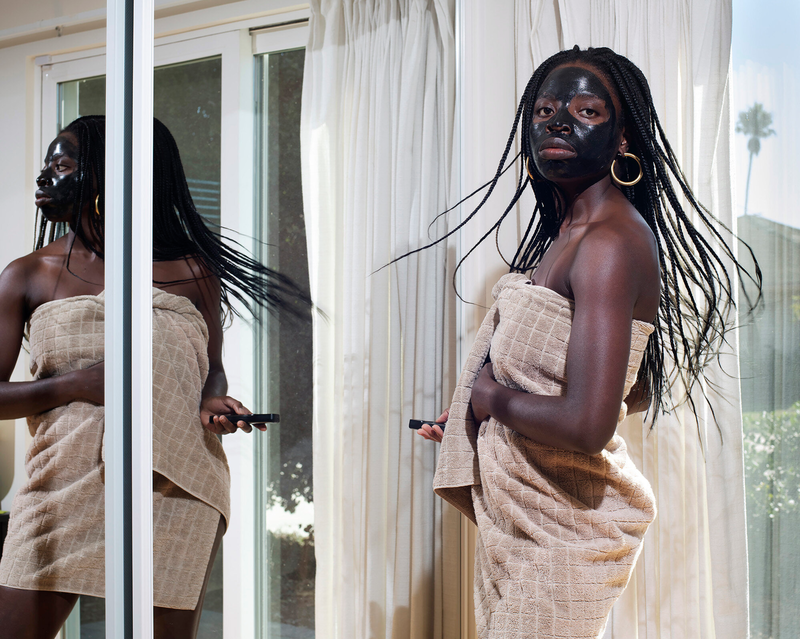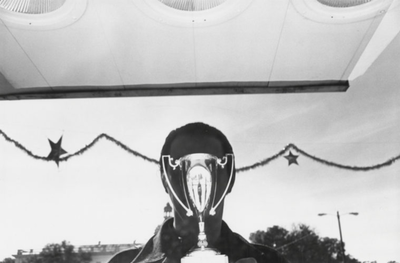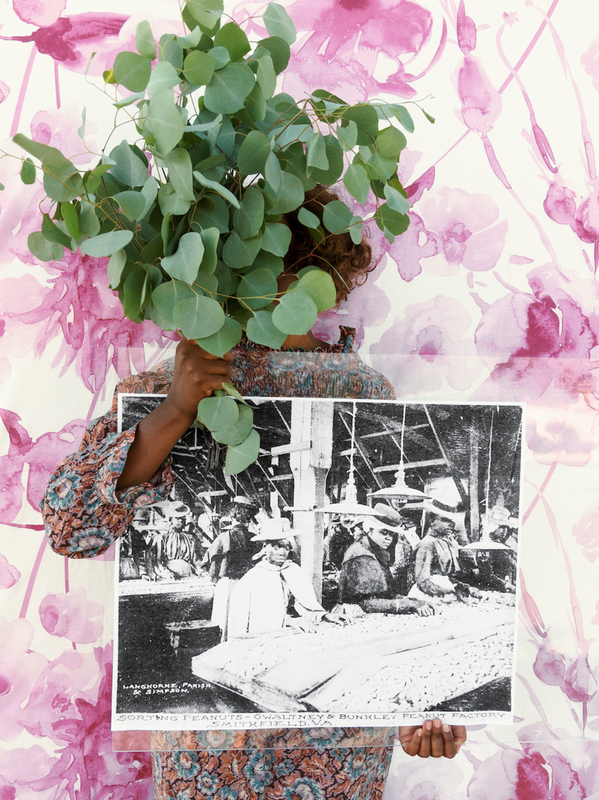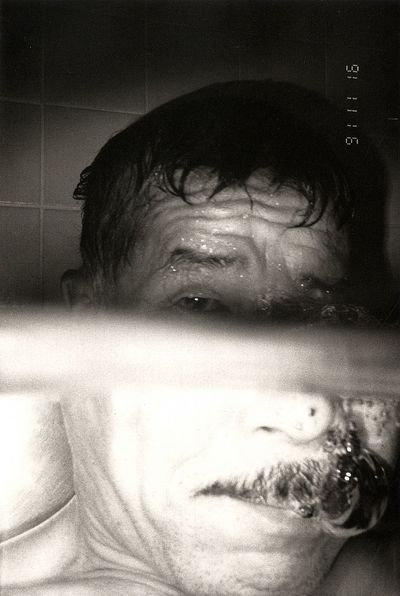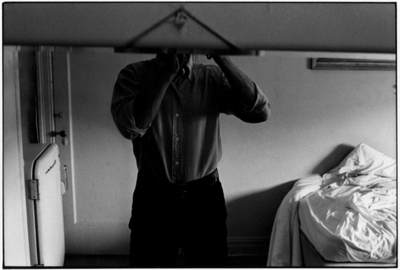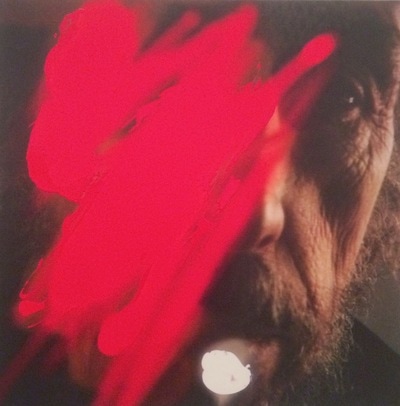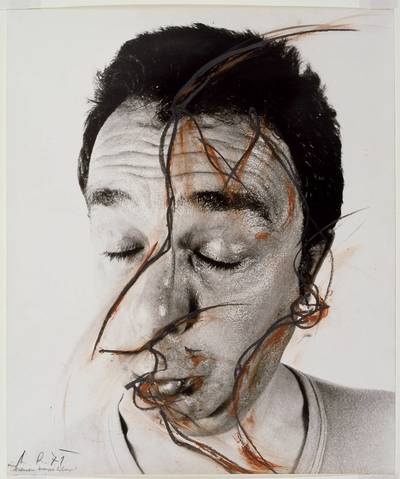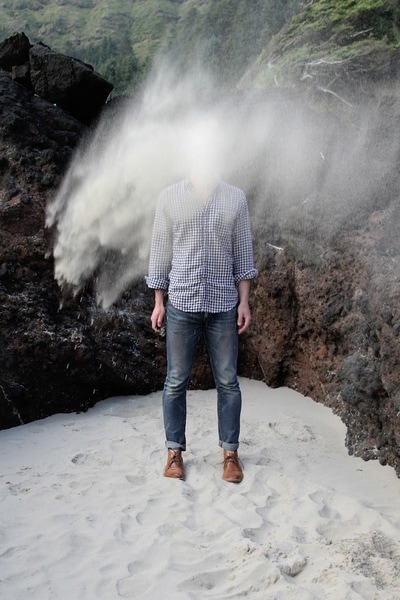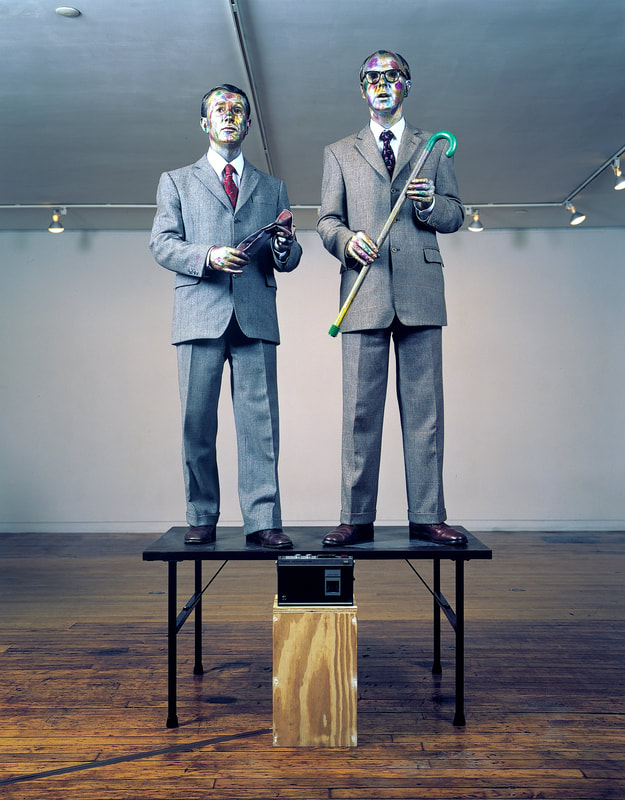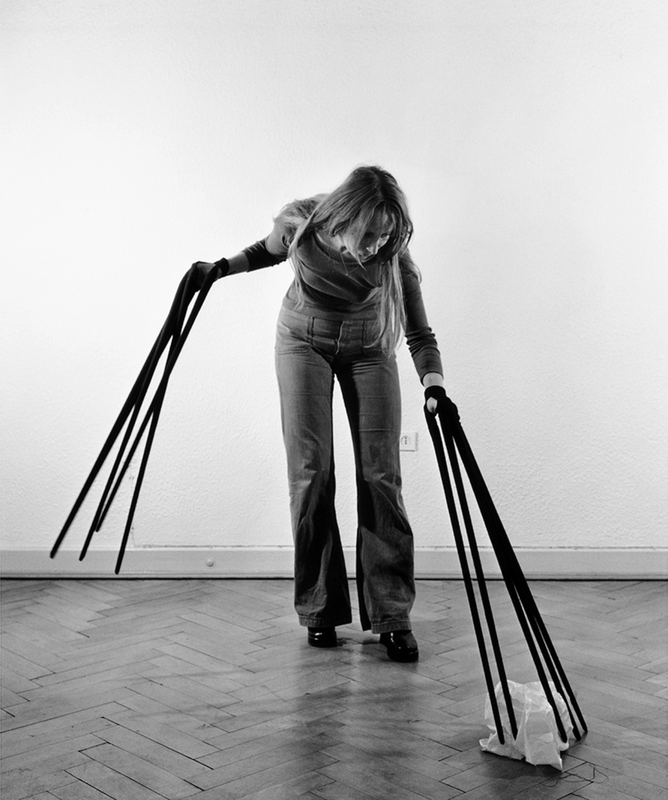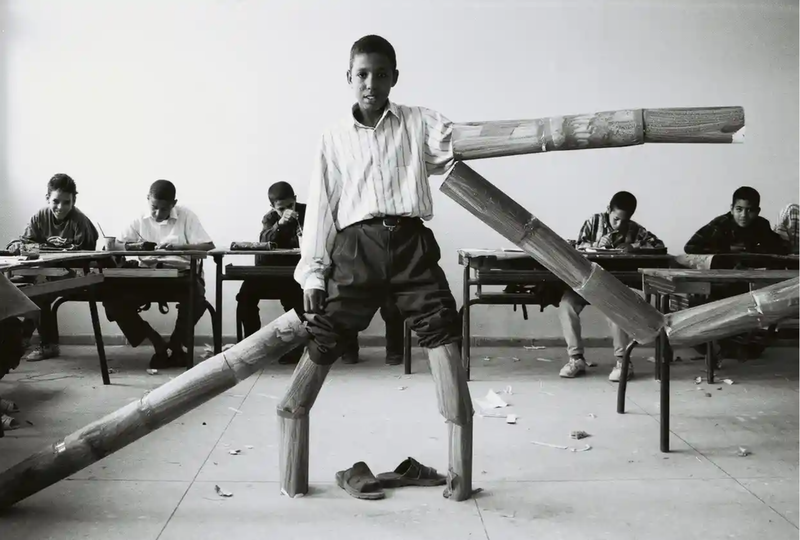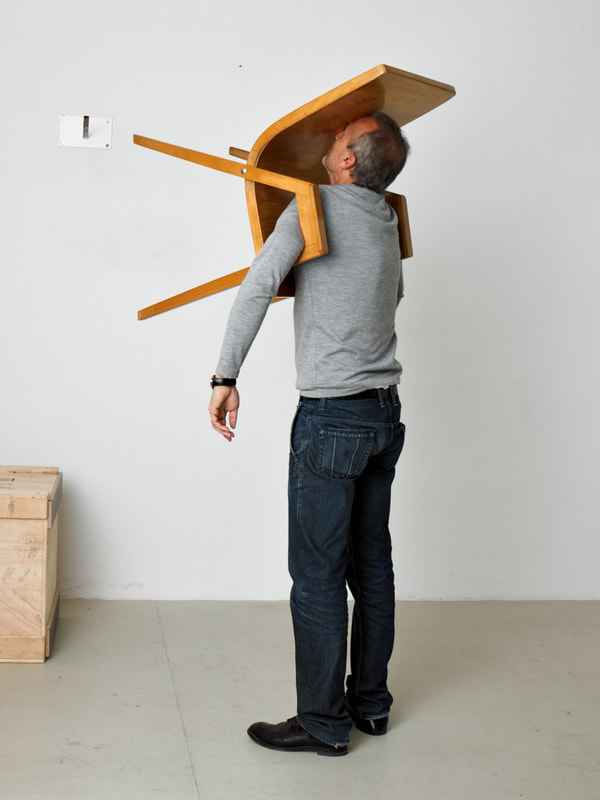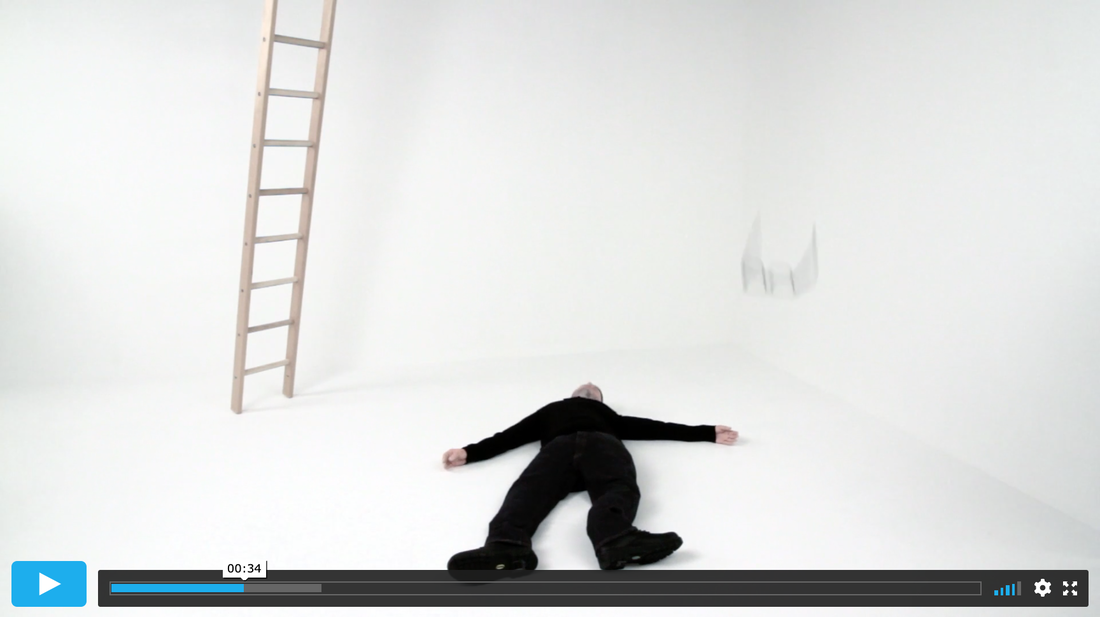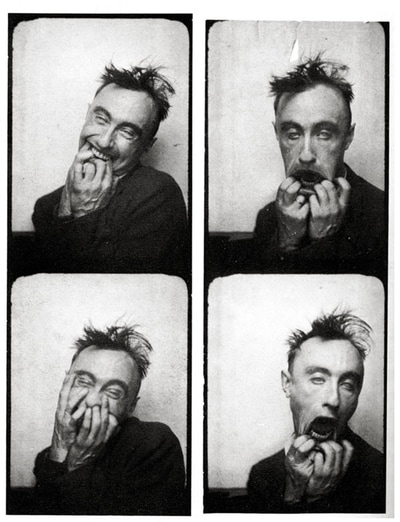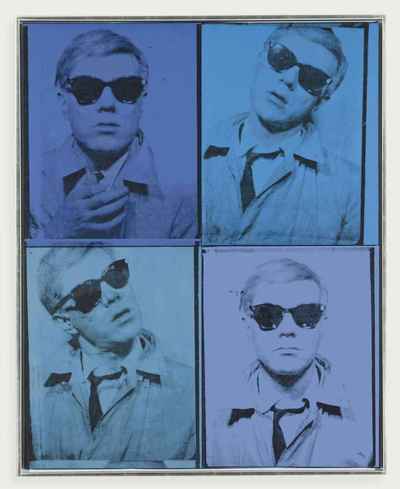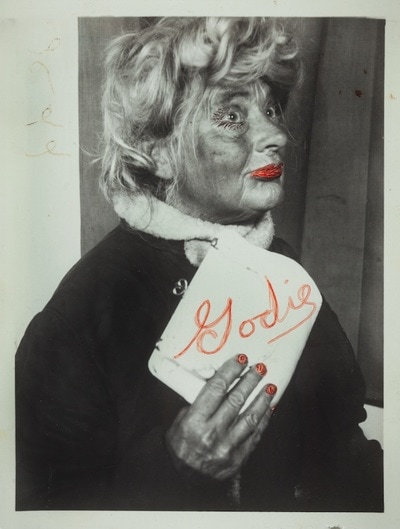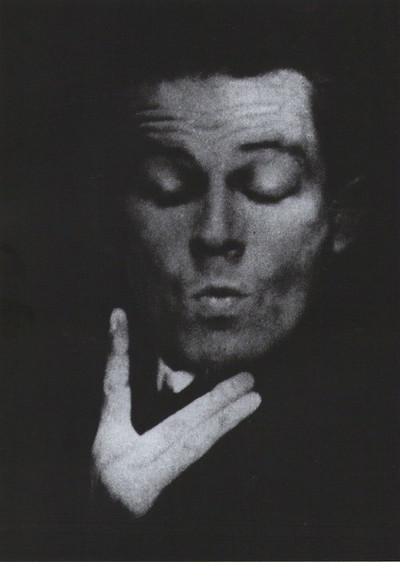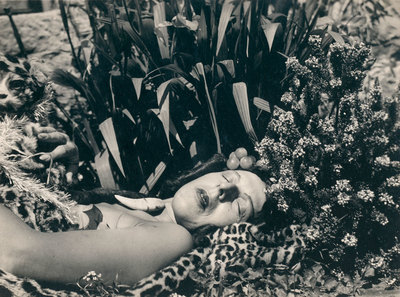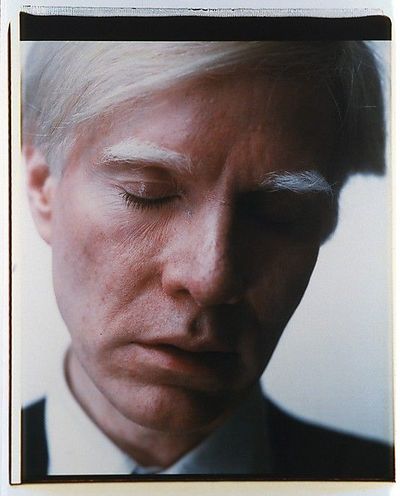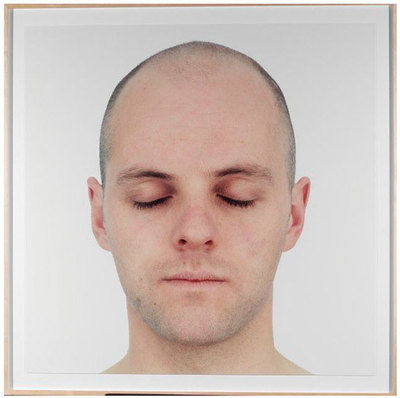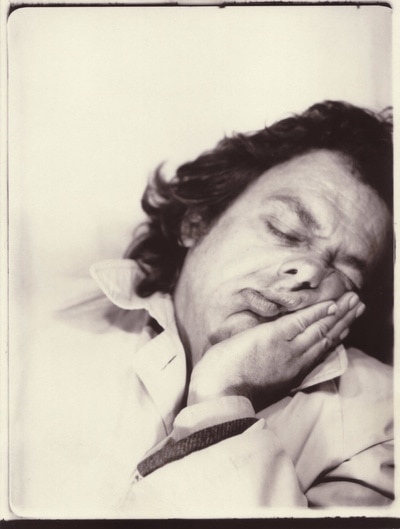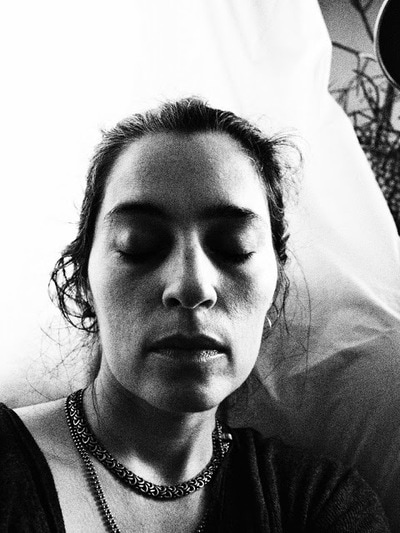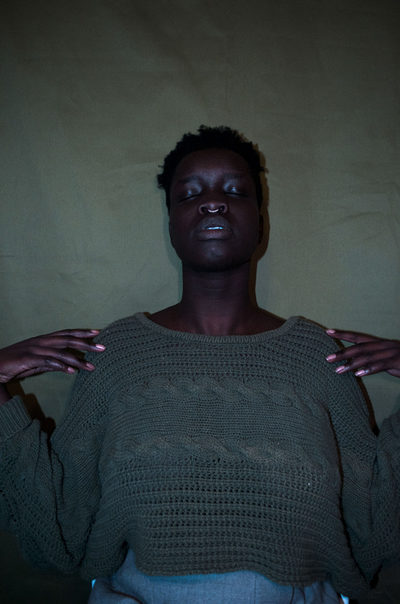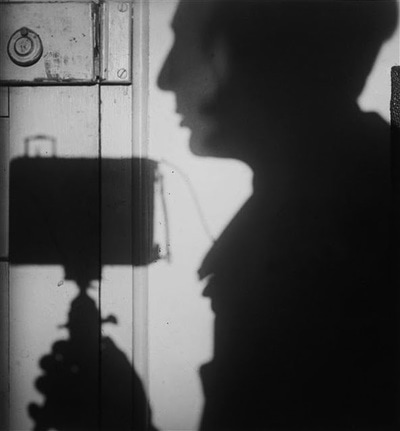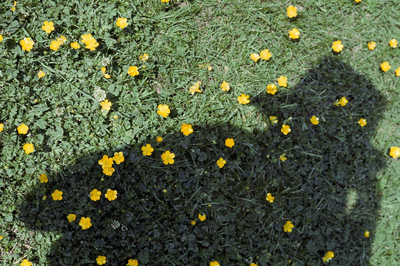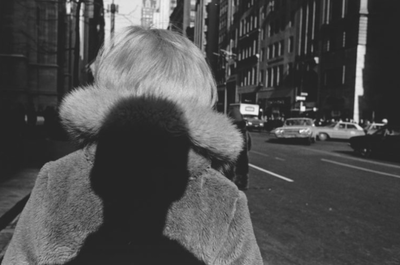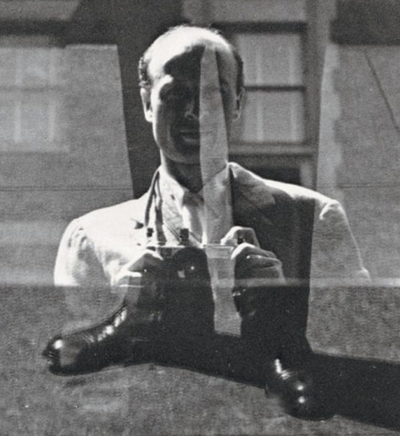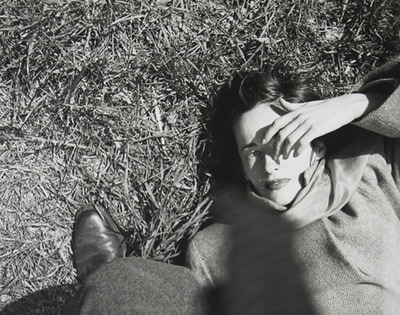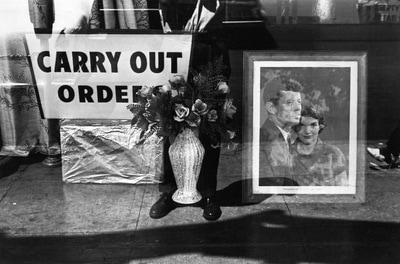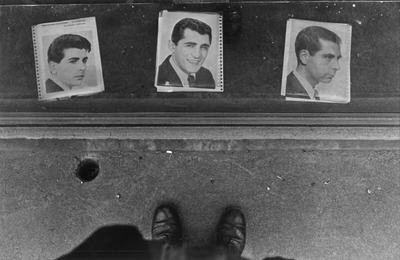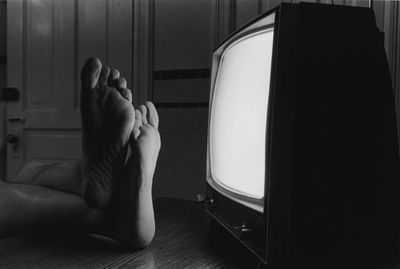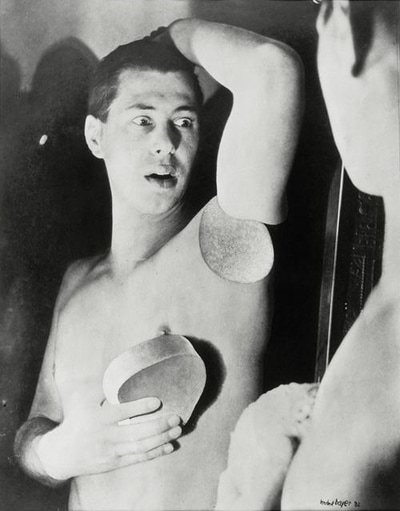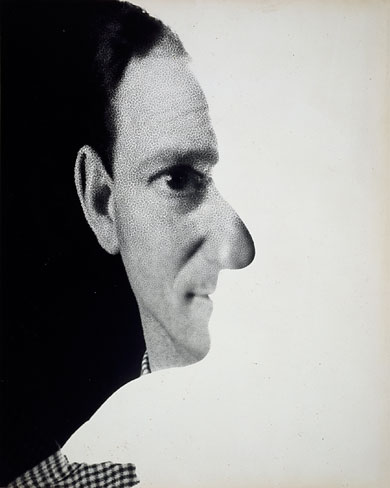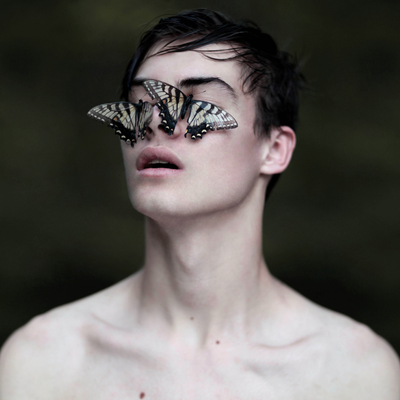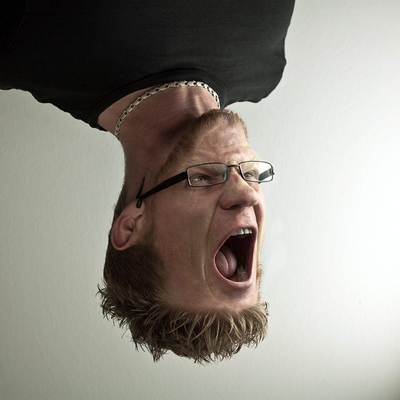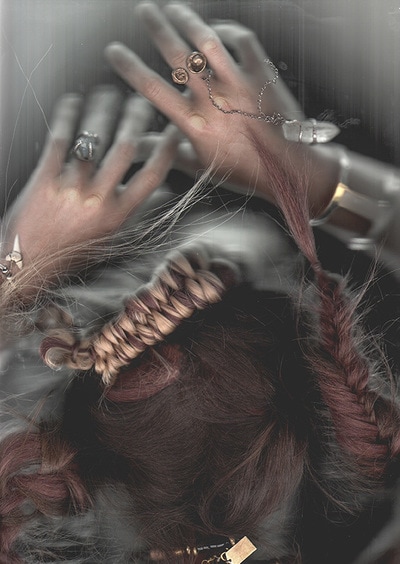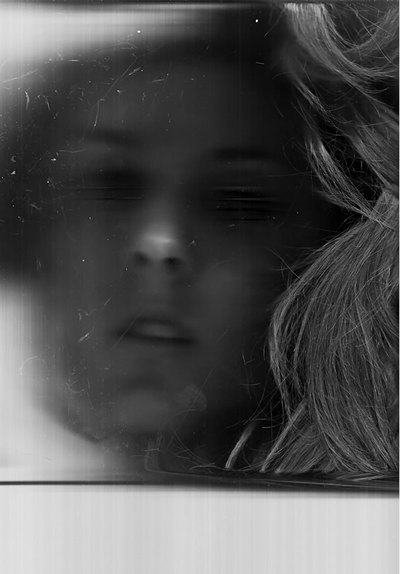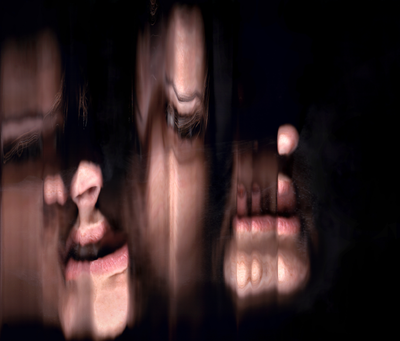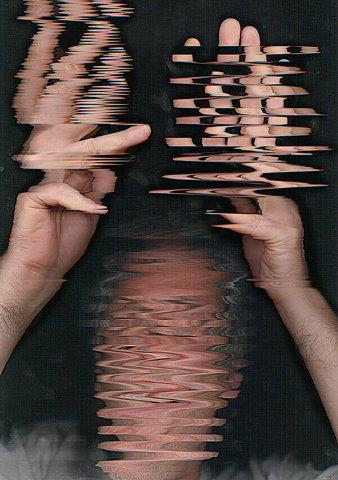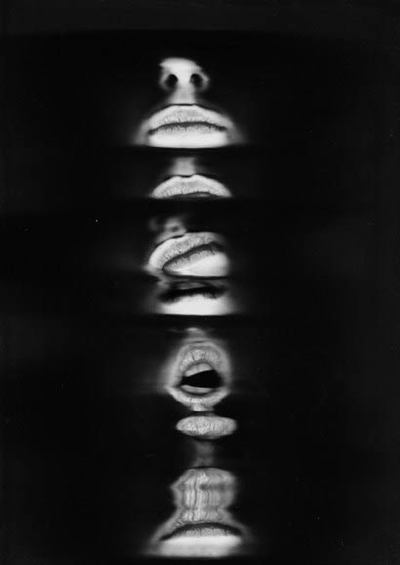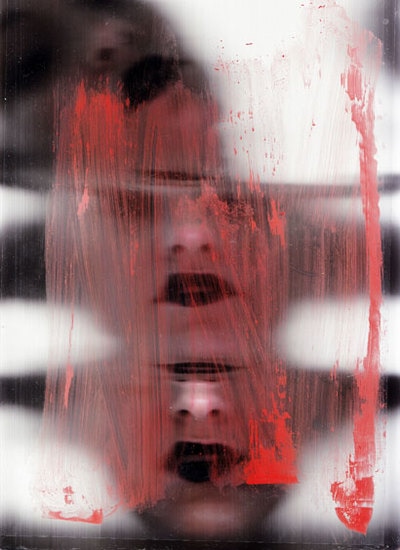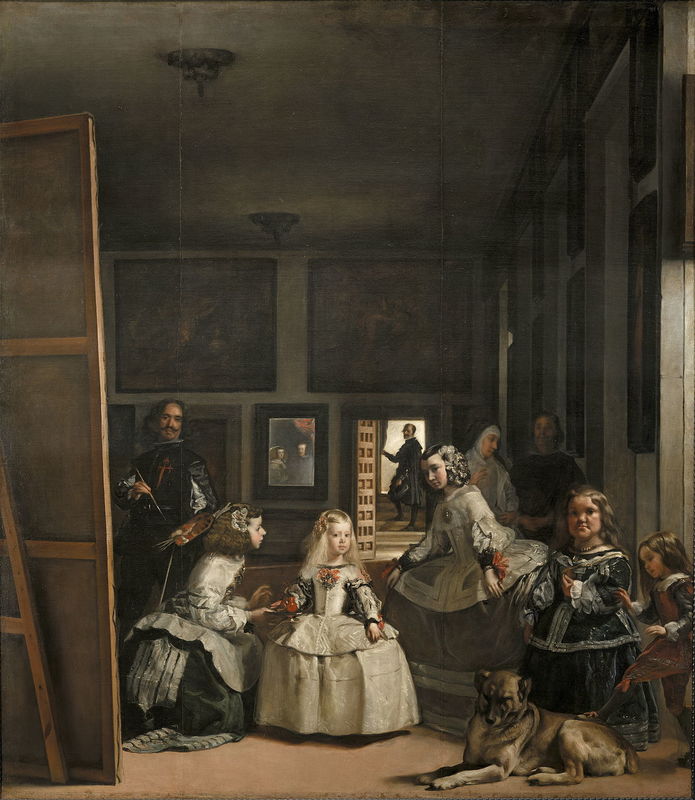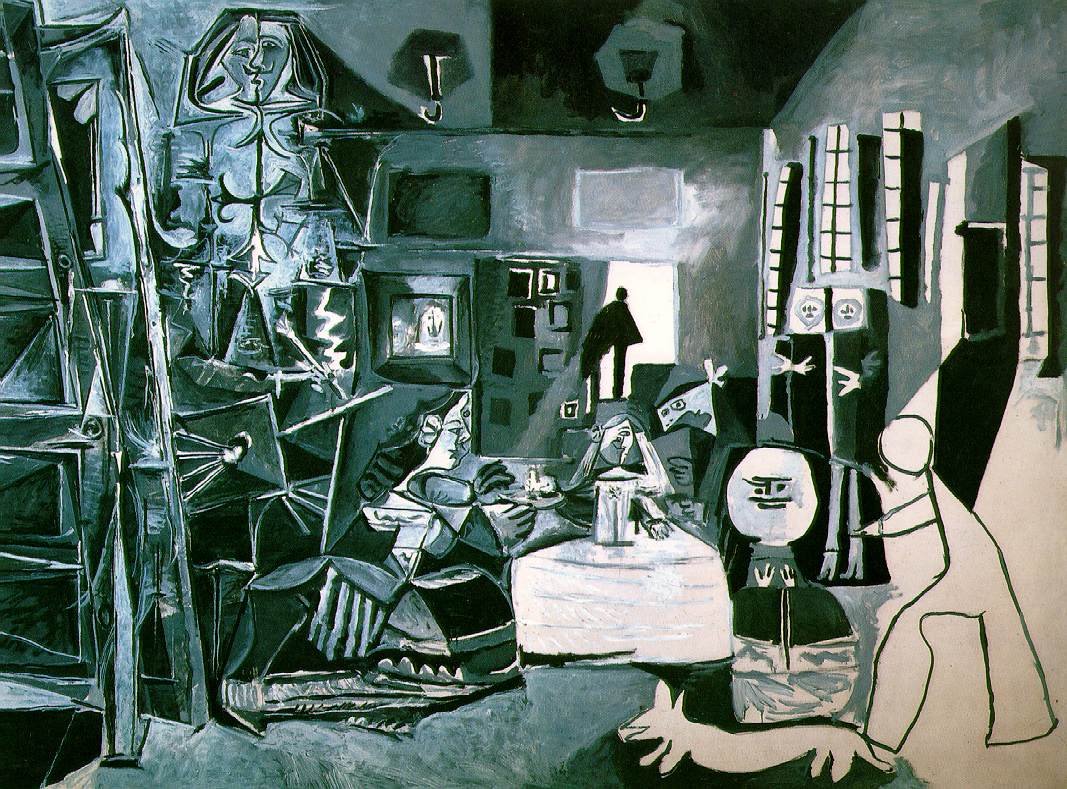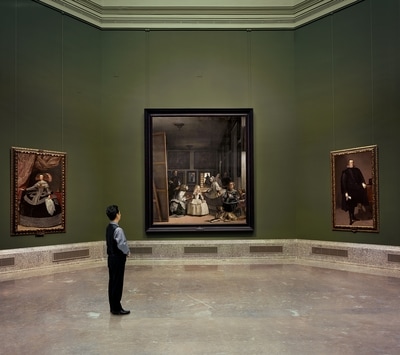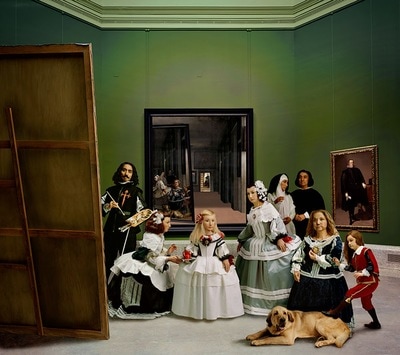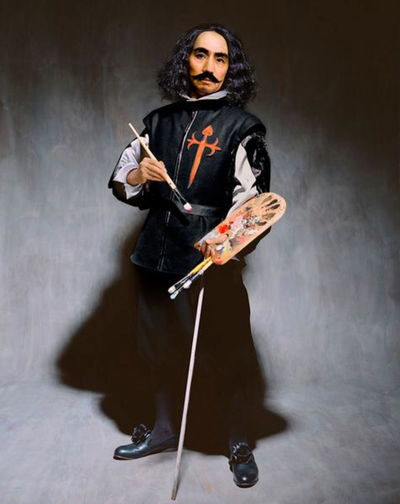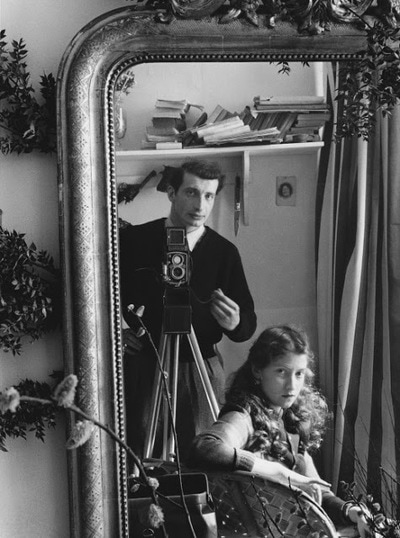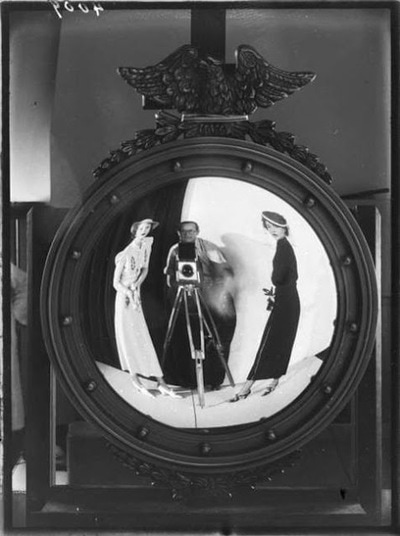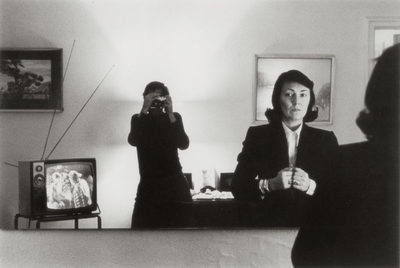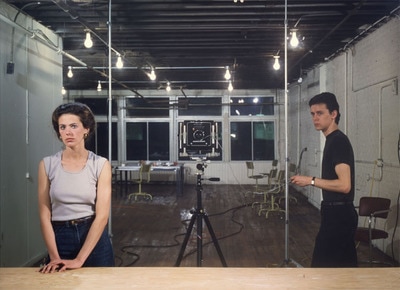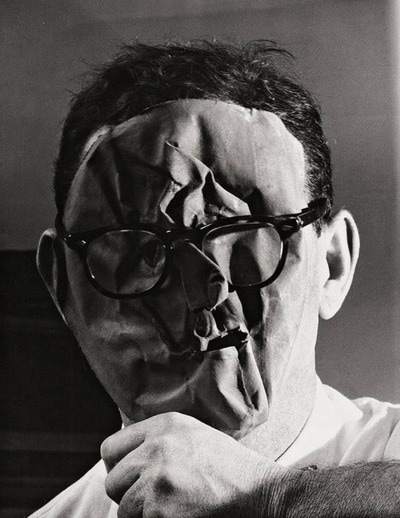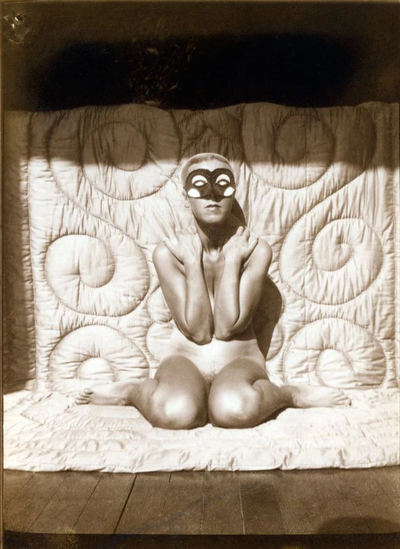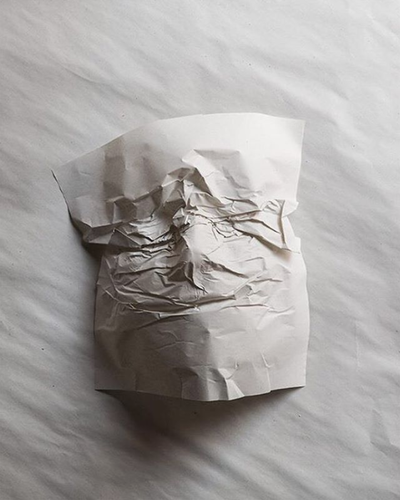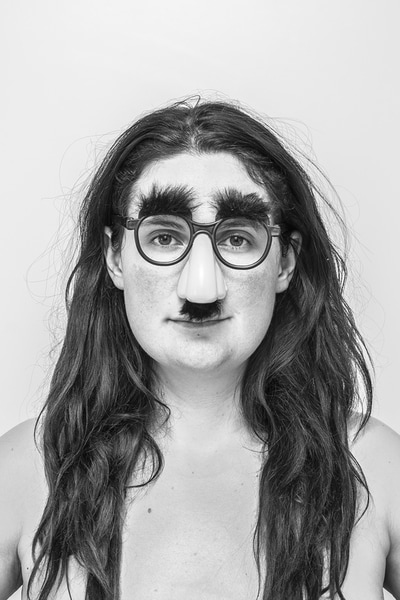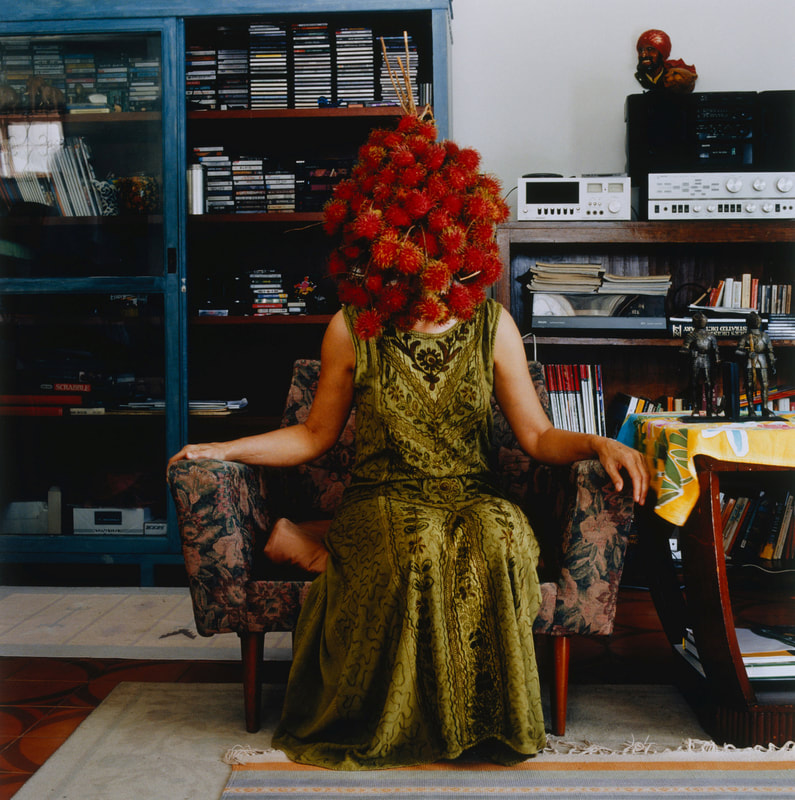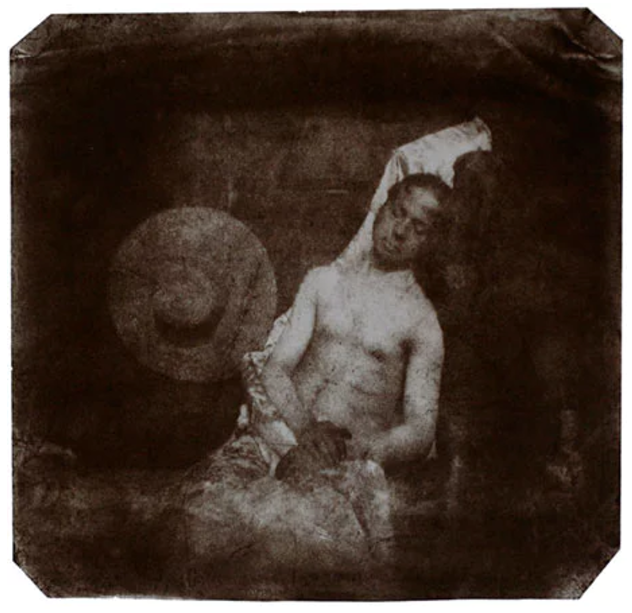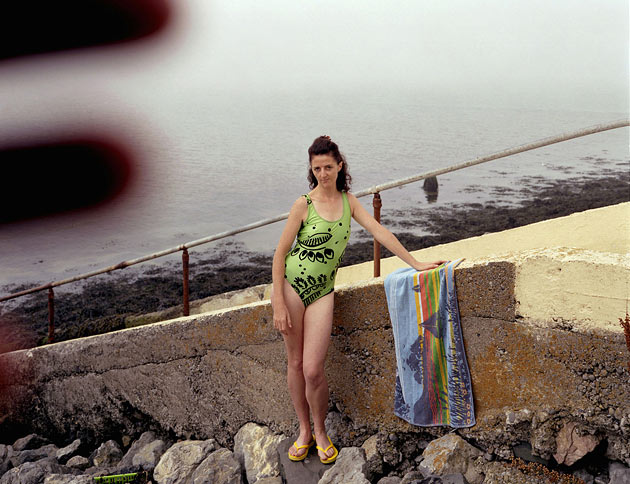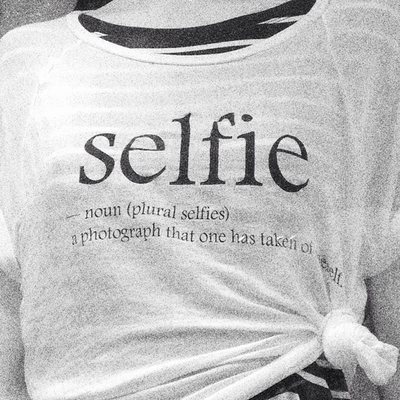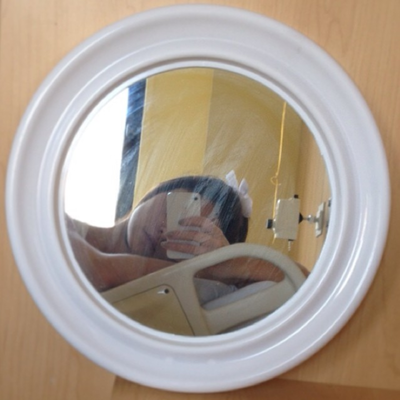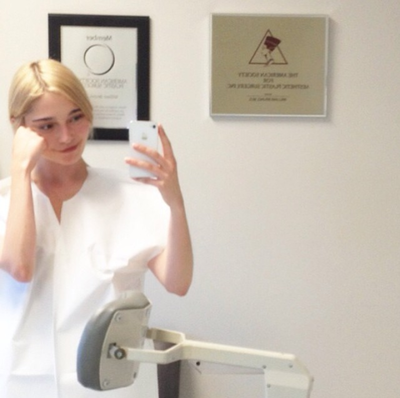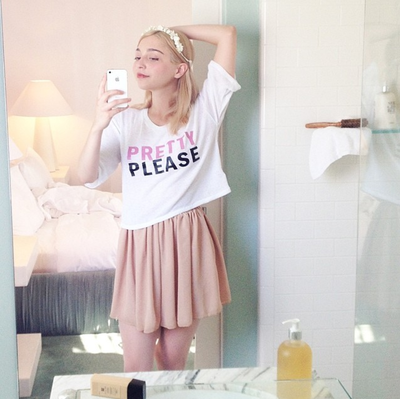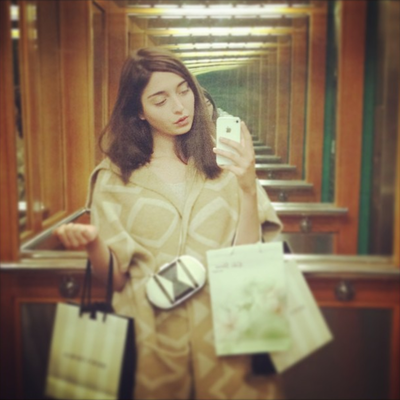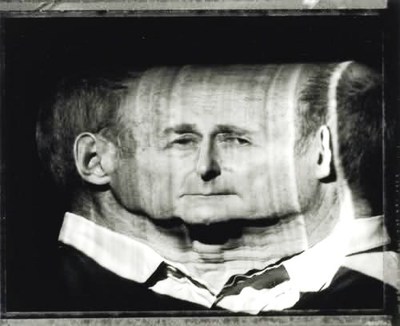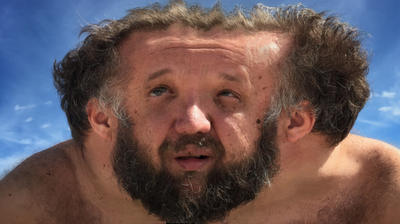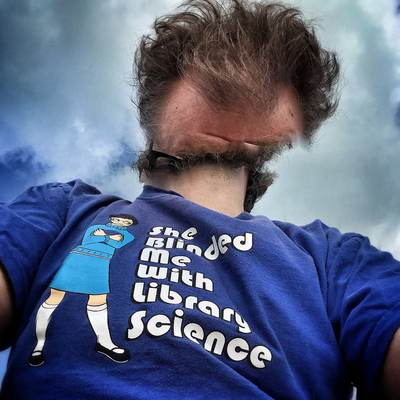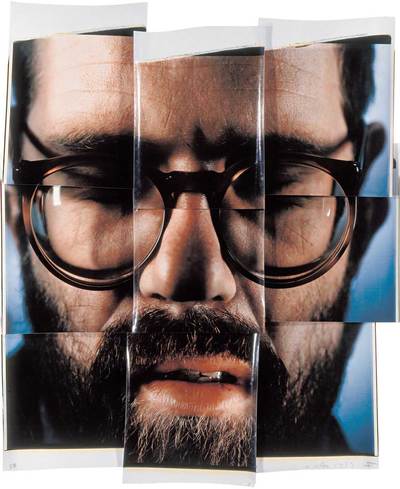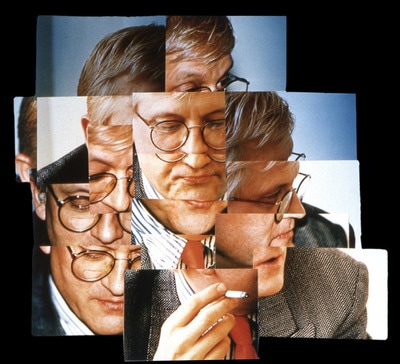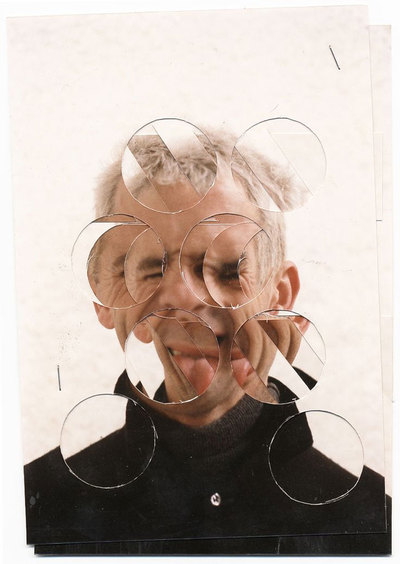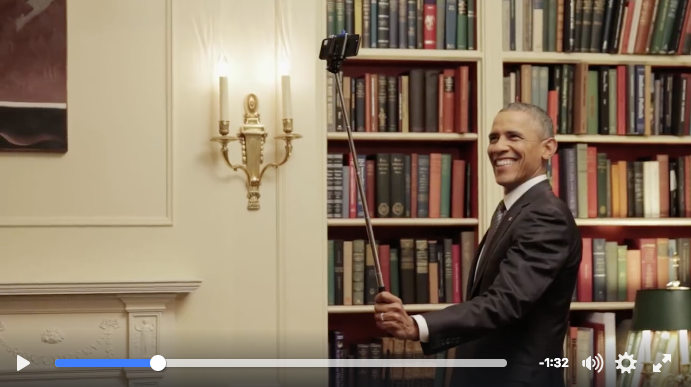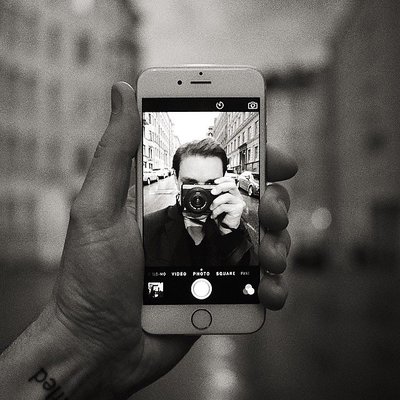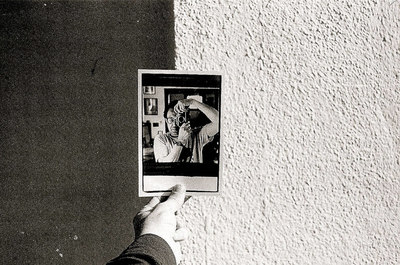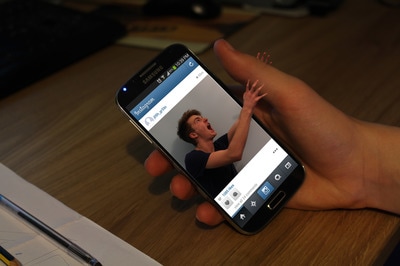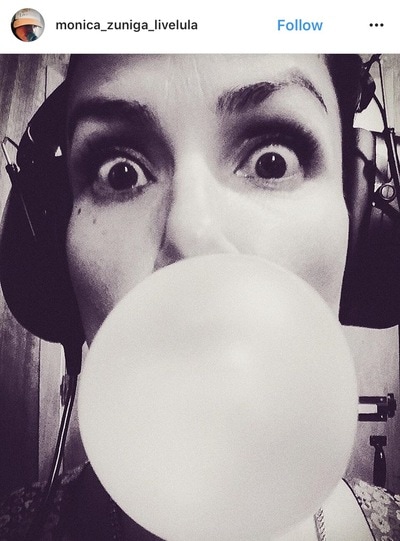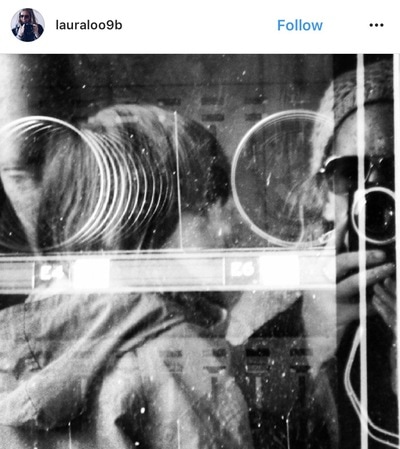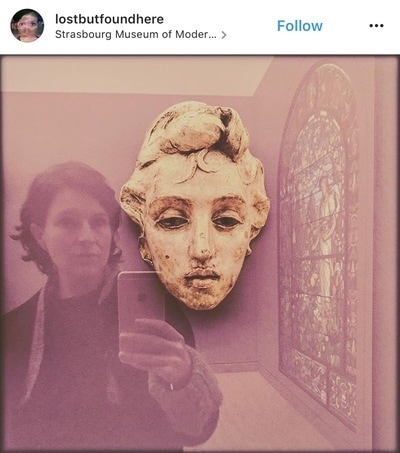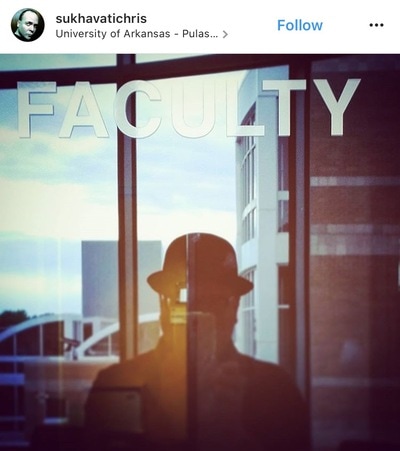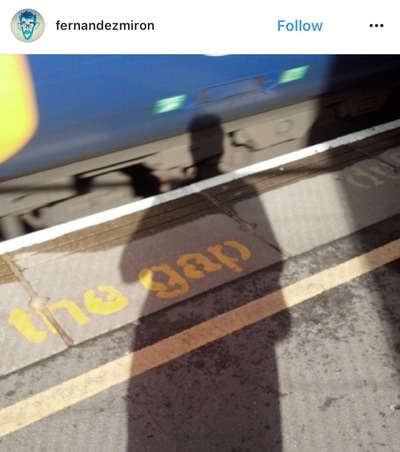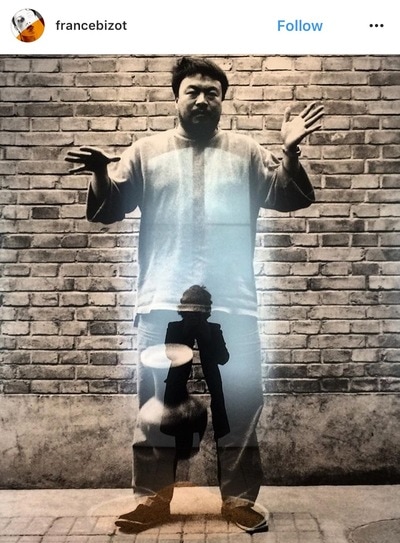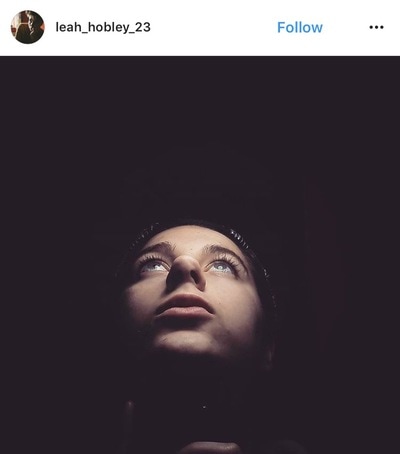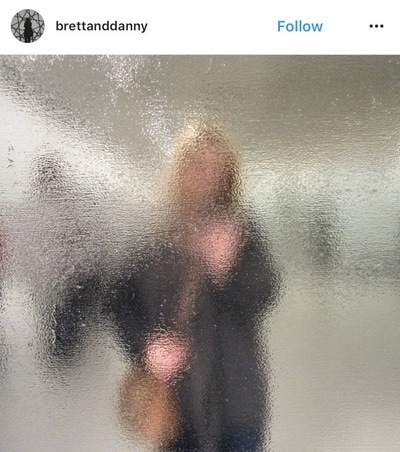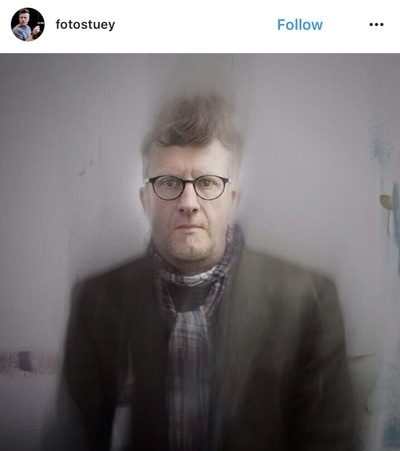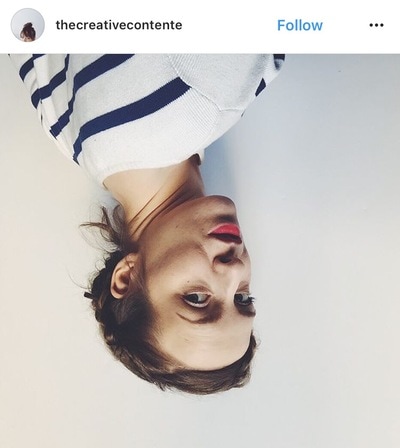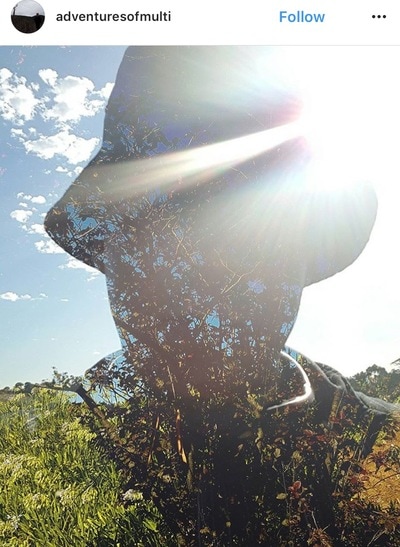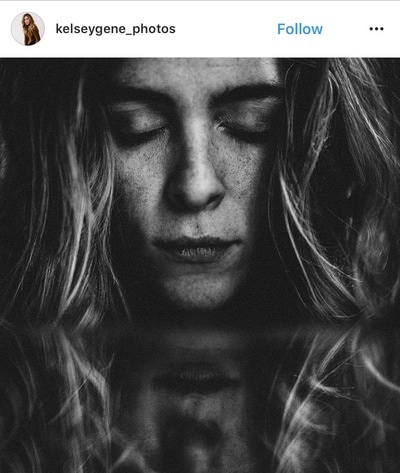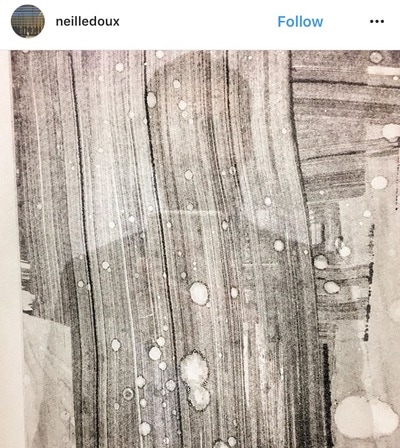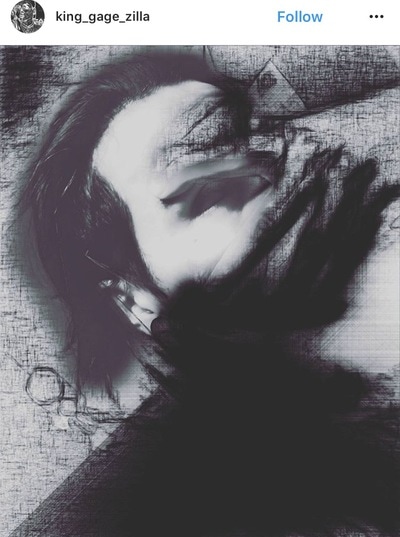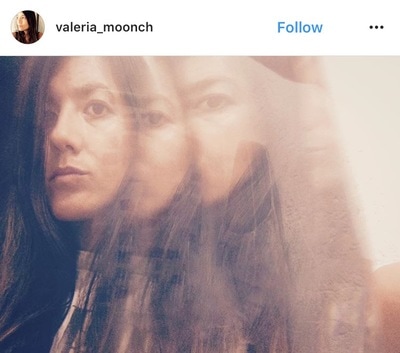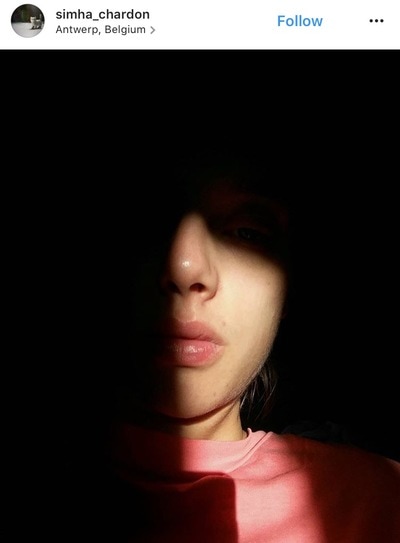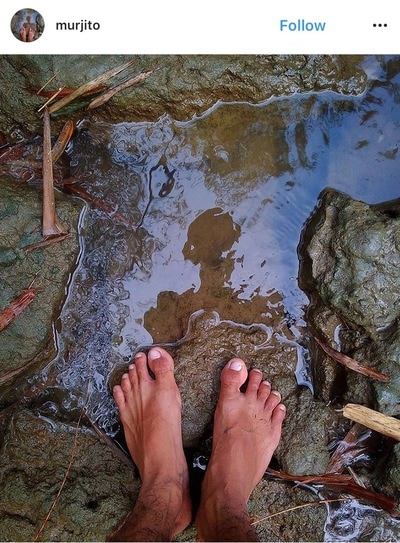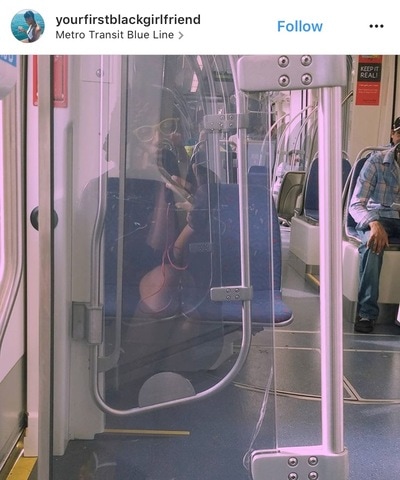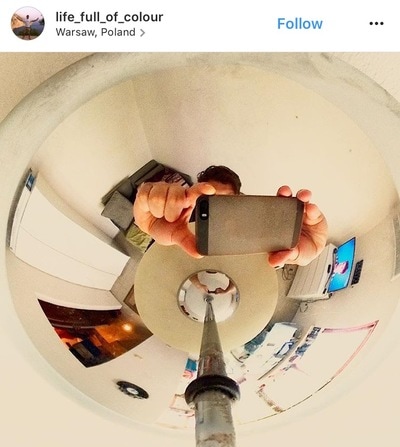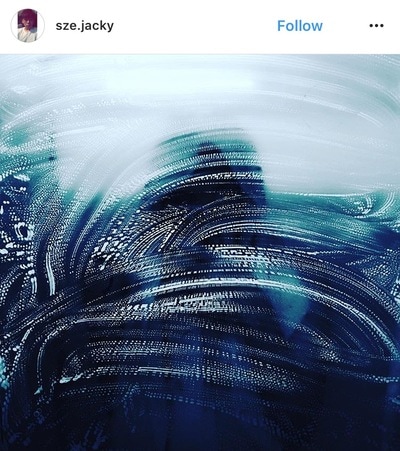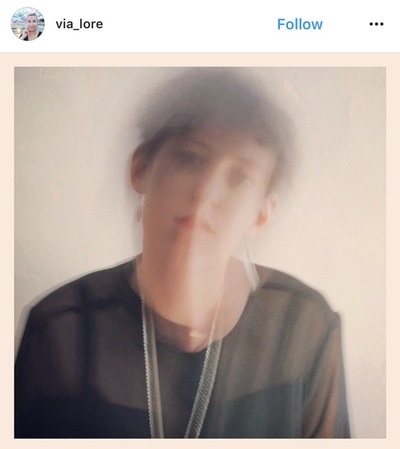KS3/4 level lesson plan:
Jon Nicholls, Thomas Tallis School
The current obsession with photographic self-portraits - The Selfie - can be traced back to the origins of photography and, beyond that, to the painted self-portrait. One of the first things photographers did when they learned how to fix light on a surface was to turn their rudimentary cameras on themselves. The earliest known example comes from 1839, the same year that Louis Daguerre patented the 'invention' of photography as a commercially viable process. Since then, the self-portrait, a genre inherited from painting, has become a staple form of photographic image making.
This project has three main aims:
|
|
The Selfie accounts for a large proportion of the digital photographs people make. According to a recent survey, 24 billion selfies were uploaded to the Internet in the year 2016. What explains the importance of Selfies in our image making culture? Why do we seem to enjoy looking at other people's Selfies, especially celebrities? Why do some of us make them in such large quantities? Is it a sign that we are becoming ever more self-obsessed, or can we see this phenomenon as a positive means of creative self-expression? Have human beings always been interested in seeing their own faces or is this a new thing? Some initial questions:
|
What is a self-portrait?
|
A self-portrait is a work of art featuring the artist as subject. There are examples stretching back to ancient times. Self-Portraits in art can be 2 or 3 dimensional. As artists became more professional and independent, during the Renaissance period, they began to make more self-portraits as a way of celebrating their own status and individuality. Today, the self-portrait is a thriving genre, perhaps one that has been given an extra impetus by photography. It's important to remember that, when photography was 'invented' (the 1830s) it was largely influenced by painting and other 2D arts. Photographers would look to the examples provided by the history of painting in the way they composed their images. Since self-portraiture has a long history in art, it's no surprise that self-portrait photographs share some similarities with painting. Although a photograph can be made much quicker than an oil painting, the early photographic processes required people to sit still for several minutes. Various contraptions were invented to stabilise the head so that it didn't appear blurry in the final picture.
The picture on the left is a famous self-portrait by the Dutch painter and printmaker, Rembrandt. This is an etching and would have resulted from the artist drawing with a needle onto a copper plate. Does it remind you in any way of modern Selfies - the slightly surprised expression, open mouth, pouty lips...? Ironically, many of the earliest photographic self-portraits were very stiff and formal by comparison. |
What is a Selfie?Selfie is slang for Self-Portrait. It is used today to infer a photographic self-portrait taken on a mobile device with a front-facing camera and shared via social media. In 2013, "Selfie" was word of the year in the Oxford English Dictionary. The inclusion of front facing cameras on smart phones and the popularity of social media sites like Instagram and Snapchat have made the posting of Selfies increasingly popular as a form of photographic self-expression. On 30 March 2017, the Saatchi Gallery in London launched an exhibition entitled From Selfie to Self-Expression, claiming it to be "the world’s first exhibition exploring the history of the selfie from Velazquez to the present day, while celebrating the truly creative potential of a form of expression often derided for its inanity."
|
I haven’t been asked for an autograph since the invention of the iPhone with a front-facing camera. The only memento ‘kids these days’ want is a selfie.
-- Taylor Swift
Why are Selfies criticised for being empty, boring or pointless? Perhaps if we understood how significant they have been in the history of art and photography we might take a different view? This is certainly the aim of the Saatchi show. Let's look at a couple of recent and remarkable examples:
These are remarkable examples of The Selfie for different reasons. Take a close look at the first photograph. What can you see?
Take the second example. This is not a conventional Selfie but rather a photograph of a man in the process of taking a Selfie.
- Who is taking The Selfie?
- Where is s/he taking it?
- What is reflected in the astronaut's helmet?
- What's the bright object behind his/her head?
Take the second example. This is not a conventional Selfie but rather a photograph of a man in the process of taking a Selfie.
- How do you think this photograph was made?
- Who is the man and what is happening behind him?
- This image was featured in an exhibition about modern art and war at a museum. Why do you think the curators chose this particular picture to advertise the exhibition? You can read more about the image and the exhibition here.
The Back-to-the-Future Selfie
V-J Day in Times Square, a photograph by Alfred Eisenstaedt (below left), was published in Life magazine in 1945 with the caption, "In New York's Times Square a white-clad girl clutches her purse and skirt as an uninhibited sailor plants his lips squarely on hers". This iconic photograph (along with other famous images) has been transformed into a Selfie by an advertising agency (below right) in order to publicise a South African newspaper. How does this advert work?
Some more questions:
To what extent are Selfies a kind of performance?
The selfie makes us accustomed to putting ourselves and those around us ‘on pause’ in order to document our lives.
-- Sherry Turkle
There are lots of people who think that Selfie culture is a bad thing. How can Selfies be used positively?
Rather than dismissing the trend as a side effect of digital culture or a sad form of exhibitionism, maybe we’re better off seeing selfies for what they are at their best — a kind of visual diary, a way to mark our short existence and hold it up to others as proof that we were here.
-- Jenna Wortham
Selfie Experiments:
The following experiments are designed to encourage you to get to know some famous (and not so famous) examples of self-portraits in art and photography and to use them to help you create your own examples. Rather than relying on the current, limited, stock of poses and facial expressions that tend to dominate Selfie culture, these experiments will hopefully broaden your repertoire and make your Selfies stand out from the crowd!
Selfie Experiment #1: The Reflected/Mirror Selfie
This article provides a useful starting point for reflecting (see what I did there?) on the mirror Selfie. Once you've had a look at some examples, experiment with your own Reflected Selfies*. Try using a range of reflective surfaces (not just mirrors). What happens when you choose a shop window, curved surfaces or a sequence of mirrors, for example? Will you look straight into the reflective surface or to one side? Will you include your phone/camera or hold it out of the way?
* For an extra twist on the Reflected Selfie check out the Las Meninas Selfie below.
Selfie Experiment #2: The Disguised Selfie
|
There are lots of famous self-portraits from the history of art but this is one of my favourites. Courbet shows himself in a heightened state of emotion, staring straight out at the viewer, clutching at his hair. The artist is known to have suffered from bouts of melancholy and he certainly faced financial hardship but there is also an element of play-acting in this painting. Courbet is dramatising his feelings in a painting which would have taken many hours to complete. He has deliberately chosen the composition, dramatic lighting effects and strange colours to suggest the idea of desperation. What looks like a momentary gesture of panic has, in fact, been carefully stage-managed.
Artists and photographers have always enjoyed playing with the image of themselves, experimenting with costumes, make-up, poses and lighting to transform themselves into a wide range of characters. Look at the examples below and research those you find interesting. Attempt your own experiments with the Disguised Selfie. Could you change your gender, become a character from a favourite film, turn your back to the camera or become a famous work of art? |
Selfie Experiment #3: The Obscured Selfie
Associated with the Disguised Selfie, there are several examples of photographic Selfies in which the subject's face is obscured. This effect is a special feature of photography that doesn't feature so much in painting. The camera flattens three dimensional space so that something in the foreground can appear to be on the same level as something else in the background. Of course, some of the obscuring can be done after the fact. Look at these examples and then experiment with making your own Obscured Selfies.
Selfie Experiment #4: The Human Sculpture/Performance Selfie
Rather than taking a straightforward self-portrait, some artists have experimented with transforming themselves (and others) into sculptures. Often these images are part of a performance (see the videos below of Gilbert and George performing 'Bend It' and Wood and Harrison's '100 Falls'). For Erwin Wurm, these sculptural acts take just a minute. The photographs is all that remains. Hicham Benohoud collaborated with his students (in Marrakesh) to create playful self-portraits in the middle of his lessons. Rebecca Horn has experimented with ways to extend her body and Danny Treacy has created costumes from discarded clothing.
Selfie Experiment #5: The Photobooth Selfie
The first commercially successful photobooth appeared on Broadway in New York in 1925. It provided a way for ordinary people to create a sequence of self-portraits for very little money. One remarkable example of this is the work of Lee Gody, a homeless woman from Chicago, who used photobooths to make creative self-portraits throughout her life. More recently, Japanese artist, Tomoko Sawada, has used the idea of the photobooth to explore her identity, inventing over 400 different visual personas over several weeks. There are a number of mobile apps, like Incredibooth, that reproduce the effect of the automated strip of self-portraits. Experiment with your own photobooth style self-portraits exploring a variety of physical appearance and dress, facial characteristics and expressions.
Selfie Experiment #6: The Eyes Closed Selfie
A face with eyes closed seems unusually vulnerable. We can see the subject but they can't see us. Why are their eyes closed? Is the person blinking, are they thinking, sleeping, dreaming..? A self-portrait with eyes closed is a peculiar kind of photograph. It might suggest a particular state of mind - a withdrawing from the the business of looking - in order to occupy a more private space. These images can be both captivating and alienating simultaneously. Experiment with making your own Eyes Closed Selfies.
Selfie Experiment #7: The Shadow Selfie
A shadow is like a photograph of ourselves, an image made by light (and the absence of it). Photographers are particularly sensitive to effects of light and so have long been interested in their own shadows. Experiment with your own Shadow Selfies, exploring a variety of effects and compositions.
Selfie Experiment #8: The Just My Feet Selfie
Most Selfies concentrate on the face but why can't a Selfie represent another part of the anatomy? Take a look at these unusual self-portraits and experiment with your own Feet Selfies. You could use your feet and someone else's head. Or, if you're really clever, you could try to get a foreshortened version of your own face and feet into the same photo, like Harry Callahan.
Selfie Experiment #9: The Surreal Selfie
The word "surreal" is a bit over-used these days to mean anything strange or unusual. The Surrealists of the 1920s and 30s used the word to suggest the illogical world of dreams and the marvellous in the everyday. Do a bit of research about Surrealism and then experiment with making your own Surreal Selfies. You might also need to brush up on your Photoshop skills...!
Selfie Experiment #10: The Scanner Selfie
Scanners are special image capturing devices. Rather than capturing the image in one go they move slowly across a glass plate, scanning whatever is placed on it is a sequence of lines which are then stitched back together at the end of the process. Some artists have experimented with Scanography to create unusual self-portraits. Keeping still during the process produces a relatively conventional image. The real fun comes when you move as the machine scans the surface. This involves a fair amount of chance. Experiment with your own Scanner Selfies.
Selfie Experiment #11: The Las Meninas Selfie
|
Considered by many to be the mother of all self-portraits, Diego Velaszquez' painting entitled 'Las Meninas' is a complex speculation on seeing and status. It has influenced many subsequent artists, including Picasso (who painted 58 versions).
Japanese photographer and master of disguise, Yasumasa Morimura, has created his own tribute to the famous art work 'Las Meninas Reborn in the Night'. It is a sequence of photographs in which the characters in Velaszquez painting appear to come to life, with the photographer playing some of the roles.
|
'Las Meninas' is a self-portrait in which the artist appears with other participants. It also features a reflection (in Velasquez' painting, the mirror reflects the Spanish king and queen, whose portrait the artist is painting). The painting asks "who is looking at whom?" and "who is in control of the looking?" Several photographers have used both a mirror and other participants in their self-portraits, like the examples below. Sometimes, as is the case with the Jeff Wall photograph, there is a clear reference to another work of art.
Selfie Experiment #12: The Mask Selfie
Masks are specific kinds of disguise. Wearing masks is a feature of some theatre traditions. Masks enable the wearer to adopt another persona, to look and act in ways not necessarily like their everyday selves. Take a look at these examples (some of them are very strange) and attempt your own Mask Selfies. How can you use your face to hide your face?
Selfie Experiment #13: The Fake Selfie
|
What appears to be a photograph of a corpse is, in fact, one of the very earliest examples of a photographic fake or hoax. Hippolyte Bayard was a French civil servant who, in his spare time, had invented a reliable process of fixing photographic images. He delayed announcing his success to the authorities and, whilst he waited, another experimenter called Louis Daguerre advertised his rival process. The Daguerrotype was a huge success, officially adopted by the French government. Bayard, understandably, felt sidelined and so staged his own death photograph as a kind of protest against this unfair treatment. He even wrote an accompanying suicide note: The corpse which you see here is that of M. Bayard, inventor of the process that has just been shown to you [...] The Government, which has been only too generous to Monsieur Daguerre, has said it can do nothing for Monsieur Bayard, and the poor wretch has drowned himself [...] Ladies and gentlemen, you’d better pass along for fear of offending your sense of smell, for as you can observe, the face and hands of the gentleman are beginning to decay. This Selfie is also a great example of protest art!
|
|
Trish Morrissey's seaside self-portrait looks, at first glance, to be a normal family snapshot, taken inexpertly by a family member who forgot to remove their fingers from in front of the lens. However, it is a carefully staged self-portrait of the artist, exploring her family relationships. Morrissey is known for these unusual versions of family photographs. In one series she pretended to belong to families not her own, sitting on the beach. In this series she takes great care to select just the right props from the 70s and 80s, the most appropriate location and even the quality of the lighting to suggest authentic family snaps of the period.
Morrissey functions as director, author and actor, staging herself and her sibling in tightly controlled, fictional mis en scene based on the conventions of family snapshots. |
One of the famous infamous examples of the Fake Selfie was featured in a recent exhibition at Tate Modern entitled 'Performing for the Camera'. In April 2014 Amalia Ulman uploaded a photograph to her Instagram account of the words “Part 1", of an intended series called 'Excellences & Perfections'. It received 28 likes. This was the start of a fictional online performance via social media in which Ulman pretended to lead the life of an aspiring actress or model.
For many privileged users, social media is a way of selling one’s lifestyle, of building one’s brand. And Ulman went to great lengths to replicate the narrative conventions of these privileged feeds, from her use of captions and hashtags (#simple, #cutegasm), to the pace and timing of uploads, to the discerning inclusion of “authentic” intimate or emotional content (a photo of a lover or a moment of despair).
-- New Museum website
Ulman is now referred to as an "Instagram Artist" who successfully fooled thousands with her "masterpiece". What do you think of this project? Do you think it is a work of art? What might Ulman have been attemting to say about the relationship between social media, beauty, acceptance, success and photography?
Selfie Experiment #14: The Distorted Selfie
Several photographers have enjoyed using their equipment incorrectly to achieve unusual effects. Moving a camera (and subject) during exposure can produce some strange distortions. More recently, people have discovered that playing with the panorama function on a mobile phone can reveal glitches. It is possible to create a PanoSelfie, but much more fun to do it incorrectly. Attempt your own versions.
Selfie Experiment #15: The Cubist Selfie
Artists like David Hockney, with his Joiners series, have experimented with the idea of multiple viewpoints to create a combination photographic work of art inspired by Cubism. As well as adding several pictures together, artists have also tried cutting through layers of pictures to reveal others underneath. Experiment with your own Cubist Selfies.
Selfie Experiment #16: The Meta Selfie
|
The Selfie is now such a well-established sub-genre that people have begun to use Selfies to comment on the taking of Selfies. The Meta Selfie might be considered a Selfie about a Selfie. This is demonstrated in a recent online advertising campaign for government health care in which (ex) President Obama uses a Selfie Stick to practice poses in front of the mirror.
A Selfie of yourself taking a Selfie would also qualify as Meta. With some imagination and possibly creative use of Photoshop you could have lots of fun making your own Meta Selfies. Check out these clever responses to the idea of Selfies from students at St. Peter's School in Bournemouth. |
Some other ideas for disrupting Selfie conventions:
- The Boring Location Selfie - take a series of Selfies in the most unremarkable, unattractive and unmemorable locations you can find.
- The Deadpan Selfie - take a series of Selfies in which you look at the camera with a completely deadpan, unemotional, expressionless face.
- The Unusual Pet Selfie - take a series of Selfies with slugs, worms, pigeons and other 'pets' which you adopt momentarily for the purposes of the picture.
- The Disappearing Selfie - take a series of Selfies in which only a tiny portion of your head is visible (a few stray hairs or the top of an ear, for example).
- The Upside Down Selfie - take a series of Selfies either with your head upside down or, in the normal way but making sure you rotate the photograph by 180 degrees before publishing it.
In what other ways can you deliberately play with the 'rules' of taking Selfies, undermining and/or challenging them?
Some favourite Instagram Selfies:
Here are some favourite examples of the art of the Selfie from Instagram to help you with your own experiments.

